
Deutsch-Chinesische Enzyklopädie, 德汉百科
 FIFA Fussball-Weltmeisterschaft 1994
FIFA Fussball-Weltmeisterschaft 1994
 FIFA Fussball-Weltmeisterschaft 1994
FIFA Fussball-Weltmeisterschaft 1994

 Finanz
Finanz
 ***Globales Finanzzentrum/Global Financial Center
***Globales Finanzzentrum/Global Financial Center
 Fußball-Weltmeisterschaft der Frauen 1999
Fußball-Weltmeisterschaft der Frauen 1999

 Geschichte
Geschichte
 N 2000 - 2100 nach Christus
N 2000 - 2100 nach Christus

 Geschichte
Geschichte
 M 1500 - 2000 nach Christus
M 1500 - 2000 nach Christus

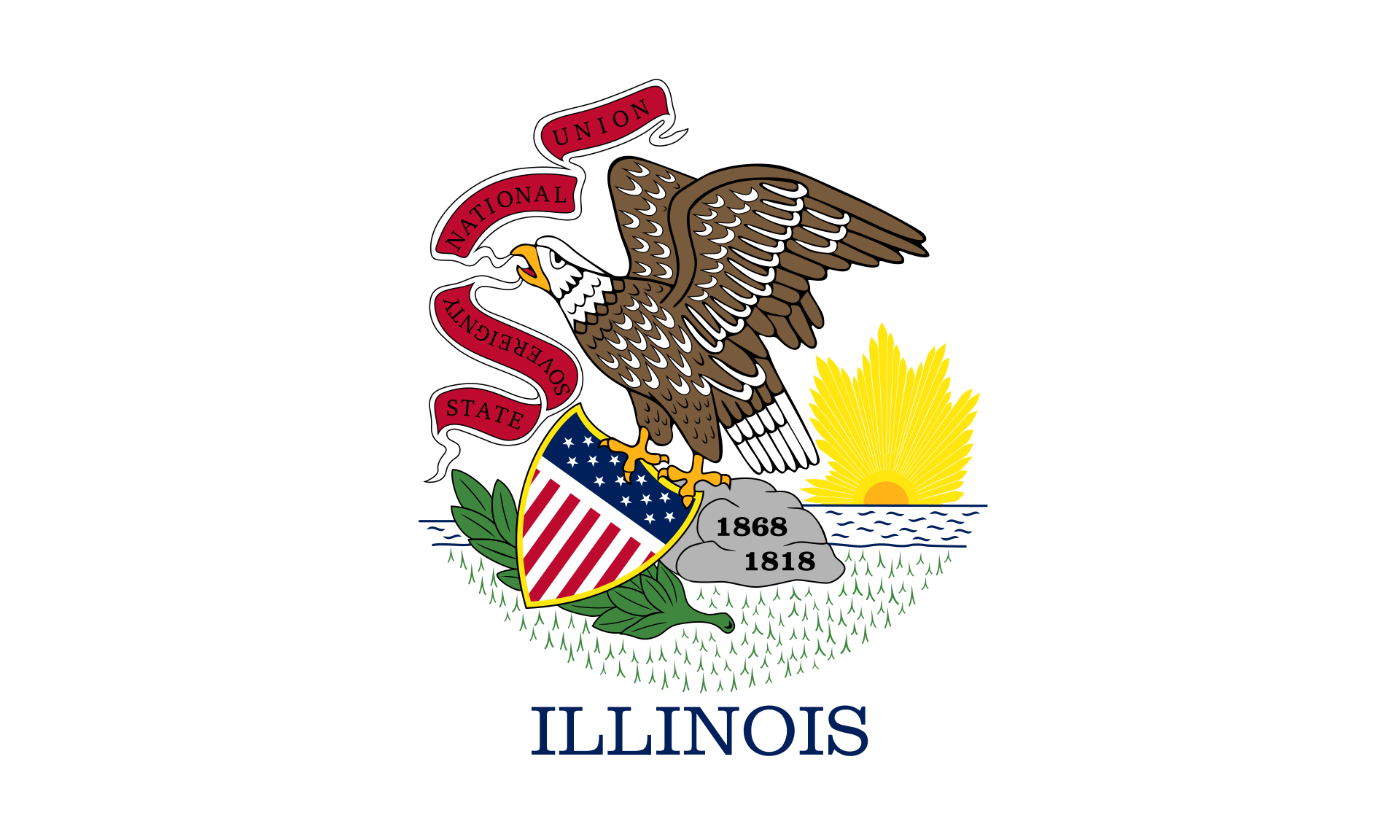 Illinois-IL
Illinois-IL

 Internationale Städte
Internationale Städte
 ***Globale wirtschaftliche Wettbewerbsfähigkeit der Städte
***Globale wirtschaftliche Wettbewerbsfähigkeit der Städte
 ITU World Championship Series
ITU World Championship Series

 Sport
Sport

 Sport
Sport
 Triathlon
Triathlon
 Vereinigte Staaten
Vereinigte Staaten

十七世纪时为法国皮毛商交易地,后归美国。1834年建市。1848年伊利诺伊·密歇根运河开通和铁路相继修建后,发展极速。全国最大的铁路 枢纽,32条干线交会于此。现为全国性的重要农畜产品贸易市场和钢铁冶炼基地。肉类加工、面粉、罐头、冷冻食品加工等发达。此外还有农机制造、机车、货 车、电话机、电视机、收音机、印刷、塑料等。包括卫星城市格里、南芝加哥,为美国第二个重工业地带。多大银行、商业企业,有芝加哥大学(1891年建)与 科学研究机构等。
芝加哥市内保存着早期传统式的西欧古建筑,又有壮观巍峨的现代摩天大楼。市区沿着宽阔壮丽的大道连绵数十公里,规划布局井井有条。现在的城市是 1871年的大火之后重建的,新城各种形状新奇、色彩各异的高层建筑使其成为一建筑艺术博物馆。芝加哥市区内摩天大楼之多,仅次于纽约。
芝加哥市内保存着早期传统式的西欧古建筑,又有壮观巍峨的现代摩天大楼。市区沿着宽阔壮丽的大道连绵数十公里,规划布局井井有条。现在的城市是1871年 的大火之后重建的,新城各种形状新奇、色彩各异的高层建筑使其成为一建筑艺术博物馆。芝加哥市区内摩天大楼之多,仅次于纽约。当今全世界5座最高的摩天大 楼有3座在芝加哥,市中心的西尔斯大厦是美国第一高楼,有110层,高443米。
19世纪开通的伊利诺伊-密歇根运河,把处于内陆的芝加哥同五大湖和大西洋连接起来,变为港口城市。海洋巨轮从加拿大的圣劳伦斯湾直驶芝加哥码头。芝加哥是美国的铁路枢纽,几十条铁路交汇于此,连接美国各大城市;它还有世界上最繁忙国际机场之一的奥黑尔国际机场;因此,芝加哥可以称得上美国东西交通、水、陆、空运输的中心。
Wie die meisten amerikanischen Städte ist Chicago am Reißbrett entworfen worden. Das Schachbrettmuster kann man z.B. von der Aussichtsplattform des Sears-Towers gut erkennen. Die Aussicht von diesem Punkt aus ist atemberaubend. Genießen Sie das Panorama des Lake Michigan und beobachten Sie die Flugzeuge die am Chicago-International-Airport landen.
Chicago (deutsche Schreibweise: Chikago,[1] Aussprache: [ʃɪˈkɑːgoʊ]; ) ist eine Stadt am Südwestufer des Michigansees im Bundesstaat Illinois in den Vereinigten Staaten von Amerika. Mit einer Einwohnerzahl von 2.722.389 (2014)[2] ist sie die drittgrößte Stadt der Vereinigten Staaten. In der Agglomeration leben 8,7 Millionen, in der Metropolregion Chicago 9,7 Millionen Menschen (2007).[3]
Chicago ist seit der Mitte des 19. Jahrhunderts eine wichtige Handelsstadt in den Vereinigten Staaten. Diese Funktion wird durch ihre Eigenschaft als Eisenbahnknotenpunkt und ihre Lage an der Mündung des Illinois Waterways begünstigt. Die Stadt liegt an wichtigen Eisenbahnstrecken, die die Ost- mit der Westküste verbinden und ist über die Großen Seen und den Sankt-Lorenz-Seeweg bzw. den Eriekanal mit dem Atlantik und mit New York City verbunden. Der Illinois Waterway stellt über den Mississippi die Verbindung zum Golf von Mexiko her.
Chicago ist Sitz der Chicago Mercantile Exchange, der größten Warenterminbörse der Vereinigten Staaten, und der Chicago Board of Trade, der größten Rohstoff-, Futures- und Optionsbörse der Vereinigten Staaten. Außerdem befindet sich hier die größte Regionalbörse der Vereinigten Staaten, die Chicago Stock Exchange.
Die Metropolregion von Chicago erbrachte 2016 eine Wirtschaftsleistung von 651,2 Milliarden US-Dollar.[4] Bei einer Studie aus dem Jahr 2014 belegte Chicago Platz 9 unter den wirtschaftsstärksten Metropolregionen weltweit und Platz 3 innerhalb der Vereinigten Staaten.[5]
シカゴ(英: Chicago [ʃɨˈkɑːɡoʊ, ʃɨˈkɔːɡoʊ, tʃɨˈkɑːɡoʊ] (![]() 音声ファイル)))は、アメリカ合衆国イリノイ州にある都市。同州最大の都市であり、国内では、ニューヨーク、ロサンゼルスに次ぐ人口を持つ。
音声ファイル)))は、アメリカ合衆国イリノイ州にある都市。同州最大の都市であり、国内では、ニューヨーク、ロサンゼルスに次ぐ人口を持つ。
シカゴはクック郡内にあり、同郡の郡庁所在地である。同郡には他にアーリントンハイツなどが含まれる。2012年の人口は271万人。
19世紀後半から20世紀中盤まで、アメリカ国内における鉄道・航空・海運の拠点として、また五大湖工業地帯の中心として発展し、ニューヨークに次ぐアメリカ第2の都市となっていた歴史を持つ。摩天楼がそびえ立つアメリカ型都市の発祥とされ、ダウンタウンの高層建築は、シカゴ派として知られ、近代建築史における重要局面をなした。1973年に建てられたシアーズ・タワー(現在はウィリス・タワーに改称)は、1998年まで世界一の高層建築であった。マコーミック・プレイスコンプレックスは、北米最大のコンベンション・センターであり、オヘア空港は全米有数の過密な空港として知られる。
アメリカのシンクタンクが2017年に発表した総合的な世界都市ランキングにおいて、世界12位の都市と評価された[1]。アメリカの都市ではニューヨーク、ロサンゼルスに次ぐ3位である。2017年3月の調査によると、世界7位の金融センターである[2]。2014年の都市の経済規模(GDP)では、世界9位となっている[3]。
日本語の漢字表記は「市俄古」。また、シカゴに住む人々は「Chicagoans(シカゴアンズ)」と呼ばれている[4]。
Chicago (/ʃɪˈkɑːɡoʊ/ (![]() listen), locally also /-ˈkɔː-/), officially the City of Chicago, located on the shores of freshwater Lake Michigan, is the third most populous city in America after New York and Los Angeles. As of the 2017 census-estimate, Chicago has a population of 2,716,450, which makes it the most populous city in both the state of Illinois and the Midwestern United States. It is the county seat of Cook County, the second most populous county in the U.S. Chicago is the principal city of the Chicago metropolitan area, which is often referred to as "Chicagoland." The Chicago metropolitan area has nearly 10 million people, is the third-largest in the United States, the fourth largest in North America, and the third largest metropolitan area in the world by land area. Chicago is the birthplace of the skyscraper, and considered the most influential architectural city of the 20th century.[6] In finance, the city saw the creation of the first standardized futures contracts at the Chicago Board of Trade; which today is the largest and most diverse derivatives market in the world, generating 20% of all volume in commodities and financial futures.[7]
listen), locally also /-ˈkɔː-/), officially the City of Chicago, located on the shores of freshwater Lake Michigan, is the third most populous city in America after New York and Los Angeles. As of the 2017 census-estimate, Chicago has a population of 2,716,450, which makes it the most populous city in both the state of Illinois and the Midwestern United States. It is the county seat of Cook County, the second most populous county in the U.S. Chicago is the principal city of the Chicago metropolitan area, which is often referred to as "Chicagoland." The Chicago metropolitan area has nearly 10 million people, is the third-largest in the United States, the fourth largest in North America, and the third largest metropolitan area in the world by land area. Chicago is the birthplace of the skyscraper, and considered the most influential architectural city of the 20th century.[6] In finance, the city saw the creation of the first standardized futures contracts at the Chicago Board of Trade; which today is the largest and most diverse derivatives market in the world, generating 20% of all volume in commodities and financial futures.[7]
Chicago was incorporated as a city in 1837 near a portage between the Great Lakes and the Mississippi River watershed and grew rapidly in the mid-nineteenth century.[8] After the Great Chicago Fire of 1871, which destroyed several square miles and left more than 100,000 homeless, the city made a concerted effort to rebuild.[9] The construction boom accelerated population growth throughout the following decades, and by 1900 Chicago was one of the five largest cities in the world.[10] During this period, Chicago made noted contributions to urban planning and zoning standards, which included creating new construction styles (including the Chicago School of architecture), the development of the City Beautiful Movement, and the steel-framed skyscraper.[11]
Positioned along Lake Michigan, the city is an international hub for finance, commerce, industry, technology, telecommunications, and transportation. O'Hare International Airport is the one of the busiest airports in the world, and the region also has the largest number of U.S. highways and railroad freight.[12] In 2012, Chicago was listed as an alpha global city by the Globalization and World Cities Research Network,[13] and it ranked seventh in the entire world in the 2017 Global Cities Index.[14] Chicago has the fourth-largest gross metropolitan product in the world — generating about $670.5 billion according to September 2017 estimates — ranking it after the metropolitan areas of Tokyo, New York City, and Los Angeles, and ranking ahead of number five London and number six Paris.[15] Chicago has one of the world's largest and most diversified and balanced economies, not being dependent on any one industry, with no single industry employing more than 14% of the workforce.[16]
Chicago was the second most visited city in the United States with 55 million domestic and international visitors,[17][18] not far behind the 62 million visitors to New York City in 2017.[19] The city ranked first place in the 2018 Time Out City Life Index, a global quality of life survey of 15,000 people in 32 cities.[20][21][22][23][24] Landmarks in the city include Millennium Park, Navy Pier, the Magnificent Mile, the Art Institute of Chicago, Museum Campus, the Willis (Sears) Tower, the Museum of Science and Industry, and Lincoln Park Zoo. Chicago's culture includes the visual arts, literature, film, theater, comedy (especially improvisational comedy), food, and music, particularly jazz, blues, soul, hip-hop, gospel,[25] and electronic dance music including house music. There are many colleges and universities in the Chicago area, of which the University of Chicago, Northwestern University, and the University of Illinois at Chicago are classified as "highest research" doctoral universities.
Chicago has professional sports teams in each of the major professional leagues, including two Major League Baseball teams. The city has had several nicknames throughout its history such as the Windy City, Chi-Town, Second City, and the City of the Big Shoulders, referring to its numerous towers and skyscrapers.[26]
Chicago (en anglais [ʃɪˈkɑːɡoʊ] ou [ʃɪˈkɔːɡoʊ]) est la troisième ville des États-Unis par sa population et se situe dans le nord-est de l'État de l'Illinois. C'est la plus grande ville de la région du Midwest, dont elle forme le principal centre économique et culturel2. Chicago se trouve sur la rive sud-ouest du lac Michigan, un des cinq Grands Lacs d'Amérique du Nord. Les rivières Chicago et Calumet traversent la ville.
Comptoir commercial fondé à la fin du XVIIIe siècle par Jean Baptiste Pointe du Sable, un mulâtre d'origine française, Chicago devient une municipalité en 18333 et acquiert officiellement le statut de ville en 18374. Elle est le siège du comté de Cook. Chicago est aussi le siège d'une paroisse catholique francophone, signe de son histoire liée à la France5.
La ville de Chicago compte 2 716 450 habitants et s'étend sur une superficie de 606 km2. Ses habitants s'appellent les Chicagoans6 (ou plus rarement Chicagolais7). Troisième ville des États-Unis par sa population, l'agglomération de Chicago est également la troisième du pays avec une population de 8 711 000 habitants s'étendant sur 5 498 km2. L'aire métropolitaine de Chicago (Chicago metropolitan area), communément appelée « Chicagoland », compte 9 526 434 habitants et s'étend sur 28 163 km28,9 à travers trois États (Illinois, Indiana et Wisconsin), ce qui en fait la quatrième aire urbaine d'Amérique du Nord après Mexico, New York et Los Angeles10.
Chicago est une ville de classe mondiale alpha11. Elle constitue le deuxième centre industriel des États-Unis et appartient à la « Ceinture des industries » (Manufacturing Belt), mais la ville est aussi une des principales places financières du monde12 et la première bourse de matières premières agricoles au monde13. C'est à Chicago que sont fixés les prix du blé et du soja aux États-Unis14. La ville se classe au troisième rang national pour le nombre d'entreprises implantées dans son agglomération15, dont les plus importantes sont Motorola, Boeing, United Airlines, McDonald's, Sears, Kraft Foods, Mondelēz ou encore les laboratoires Abbott. D'autres entreprises y ont été créées, comme Hertz, l'une des plus grandes enseignes de location de voitures. L'industrie emploie plus d'un million de personnes dans l'agglomération de Chicago15.
Grâce à sa situation exceptionnelle, la ville constitue un centre de communication majeur de voies terrestres (l'un des plus importants en Amérique du Nord), et de transports aériens avec ses deux aéroports internationaux, O'Hare et Midway. Elle acquiert une grande renommée culturelle grâce à son architecture moderne de gratte-ciel16 et attire des millions de visiteurs chaque année17. En effet, la Willis Tower (appelée « Sears Tower » jusqu'au mois de juillet 2009) a été de 1973 à 1998, le plus haut gratte-ciel du monde18 et est à ce jour le deuxième immeuble le plus haut du continent américain après le One World Trade Center à New York. Enfin, la ville compte de nombreux établissements d'enseignement supérieur, des musées prestigieux, des théâtres réputés et un orchestre symphonique de renommée mondiale.
Chicago (AFI: /ʧiˈkaɡo/[4]; in inglese /ʃɪˈkɑɡoʊ/) è la più grande città dell'Illinois, la più grande metropoli dell'entroterra statunitense e la terza per popolazione di tutti gli Stati Uniti d'America dopo New York e Los Angeles, con i suoi 2.722.389 abitanti.[3] La sua area metropolitana (detta Chicagoland) conta 9.554.598 abitanti distribuiti in un'ampia area pianeggiante situata lungo le rive del lago Michigan. Trasformatasi da cittadina in una importante metropoli, Chicago è stata definita come una delle 10 città più influenti al mondo. Oggi è una città multietnica, nonché un importante centro finanziario e industriale ed uno dei maggiori centri fieristico/espositivi mondiali.
Il centro della città (denominato "the Loop") è dominato da imponenti grattacieli che arrivano anche ai 108 piani (per un'altezza di 442 m) della Willis Tower. Questa tipologia architettonica è nata proprio a Chicago che, se da tempo ha dovuto perdere il primato di città con più grattacieli nel paese a favore di New York, vanta ancora oggi il secondo grattacielo più alto statunitense (dopo il nuovo World Trade Center) e tre grattacieli nella classifica dei primi 15 al mondo. Venti dei suoi grattacieli superano i 200 metri d'altezza e ben 240 superano i 100 metri. La città si estende per 50 km sul lago Michigan da nord a sud.
Chicago è la città con il maggior numero di ponti mobili al mondo (attualmente 45) ed è un punto di riferimento mondiale per il blues.
La città di Chicago ha diversi soprannomi, tra i quali "Windy City" e "Second City".
Chicago, conocida coloquialmente como «la Segunda Ciudad» o «la Ciudad de los Vientos», es la tercera ciudad con mayor número de habitantes en Estados Unidos, detrás de Nueva York y Los Ángeles.
Chicago se encuentra en el estado de Illinois, a lo largo de la costa suroeste del lago Míchigan, y es la sede del condado de Cook.2 Forma parte del área metropolitana de Chicago, una conurbación integrada además por los condados periféricos.
Чика́го (англ. Chicago, МФА: [ʃɪˈkɑːgoʊ] или [ʃɪˈkɔːgoʊ]) — третий по числу жителей (после Нью-Йорка и Лос-Анджелеса) город США, второй по значимости финансовый центр страны (после Нью-Йорка) и крупнейший транспортный узел Северной Америки. Расположен на юго-западном побережье озера Мичиган в штате Иллинойс; административный центр округа Кук.
Население Чикаго (по данным переписи 2010 года) составляет 2 695 000 человек. Агломерация Чикаго (с различными пригородами) называется «Большой Чикаго» или «Страна Чикаго» (англ. Chicagoland; название предложено газетой Chicago Tribune в начале XX века); в ней проживает более 9 млн человек. Агломерация Чикаго занимает 37-е место в мире по числу жителей.
Чикаго по праву считается экономической, промышленной, транспортной и культурной столицей Среднего Запада. Неофициально его иногда также называют «Второй Город» и «Город ветров». Впервые Чикаго был назван «Городом ветров» в статье в Chicago Tribune за 1858 год.
 FIFA Fussball-Weltmeisterschaft 1994
FIFA Fussball-Weltmeisterschaft 1994

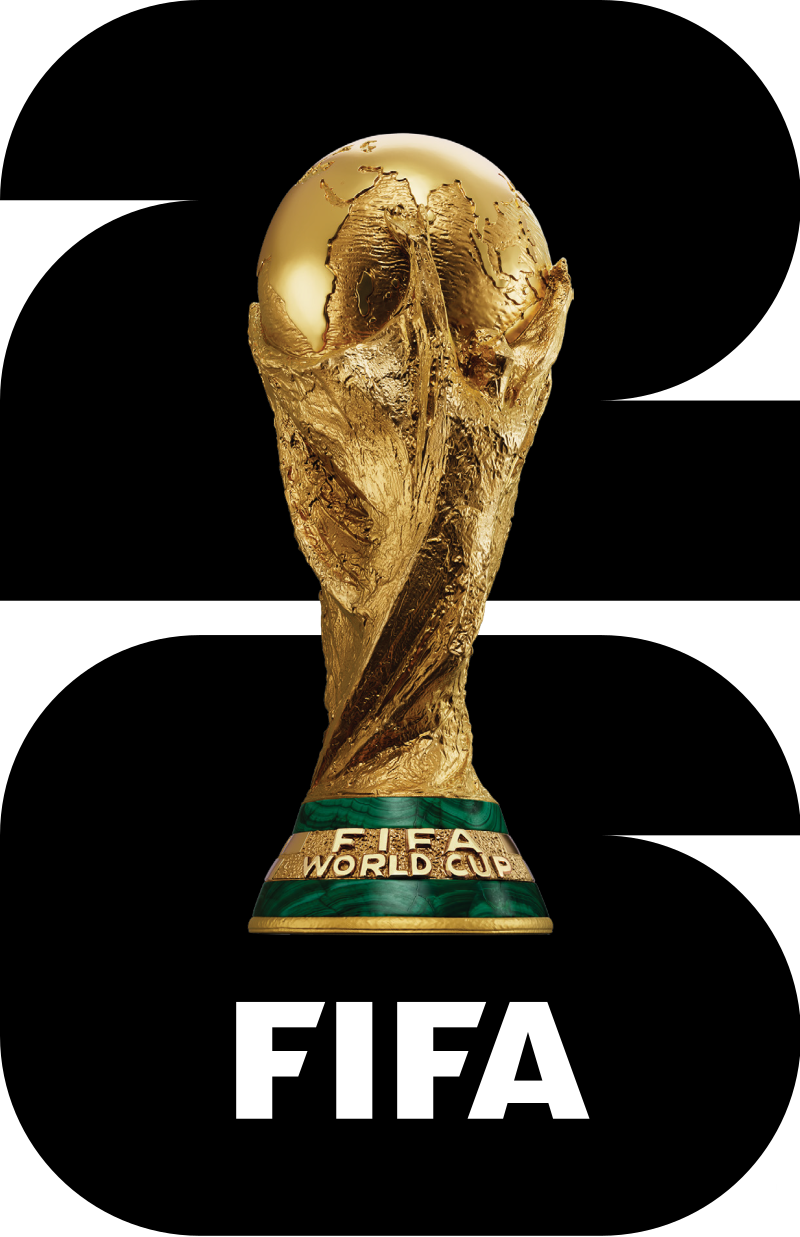 FIFA Fussball-Weltmeisterschaft 2026
FIFA Fussball-Weltmeisterschaft 2026

 Internationale Städte
Internationale Städte
 ***Globale wirtschaftliche Wettbewerbsfähigkeit der Städte
***Globale wirtschaftliche Wettbewerbsfähigkeit der Städte

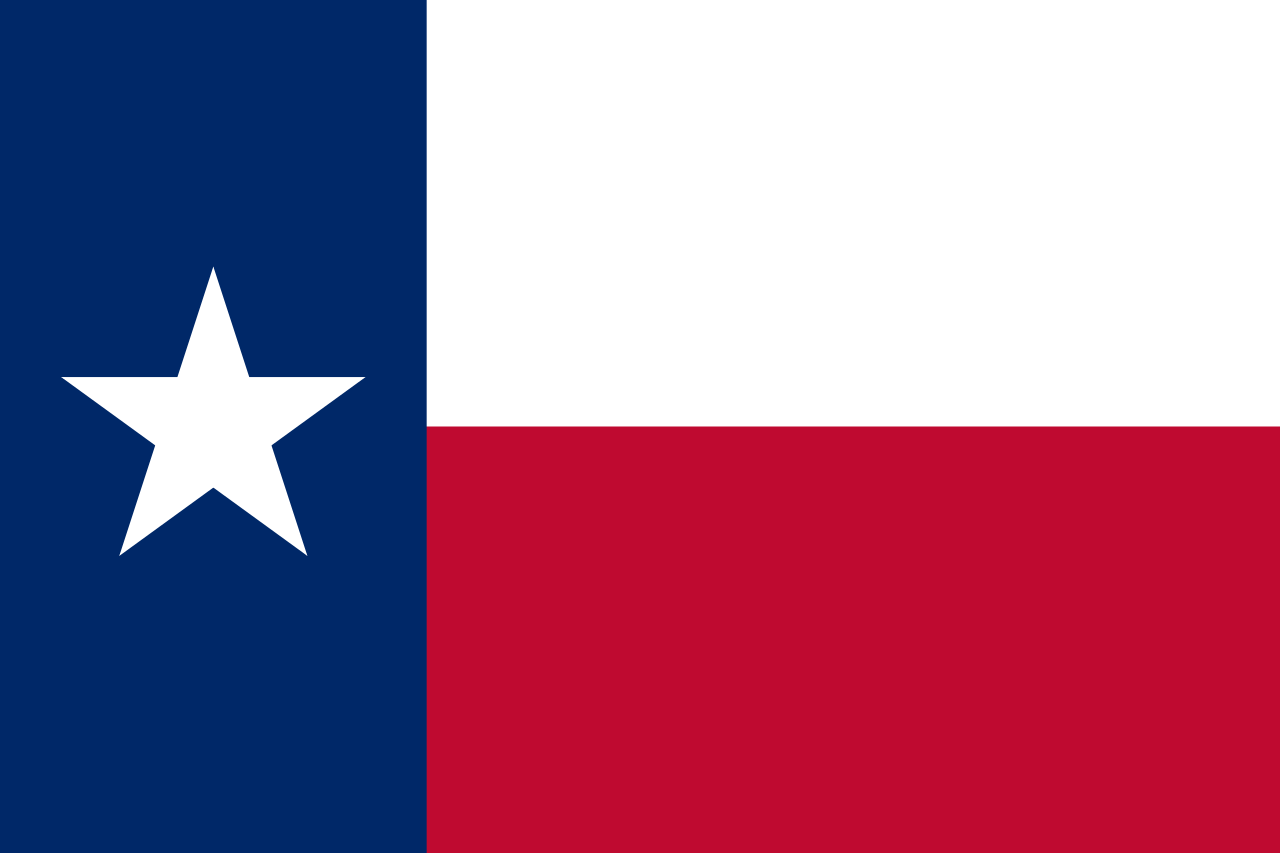 Texas-TX
Texas-TX
 Vereinigte Staaten
Vereinigte Staaten

Dallas ([ˈdæləs]) ist die drittgrößte Stadt im Bundesstaat Texas und die neuntgrößte Stadt der Vereinigten Staaten. Die Stadt hat eine Fläche von 997,1 km2 und ist auch Verwaltungssitz des gleichnamigen Countys.[1] Dallas hat 1,3 Millionen Einwohner (Stand 2016) und ist das kulturelle und ökonomische Zentrum des zwölf Countys umfassenden Großraums Dallas-Fort-Worth-Arlington. Dallas ist eine von elf Weltstädten der USA.[2]
Die 1841 gegründete Stadt war durch ihre strategische Lage an zahlreichen Eisenbahnlinien ein wichtiges Zentrum der Öl- und Baumwollindustrie. Heute ist die Wirtschaft hauptsächlich von der Telekommunikations-, Computer-, Finanzdienstleistungs- und Transportbranche bestimmt.
ダラス(英語: Dallas)は、アメリカ合衆国テキサス州北部にある都市。アメリカ合衆国南部有数の世界都市であり、州内ではヒューストン、サンアントニオに次いで人口が多い。しかし、2000年国勢調査でフォートワースやアーリントンなどを含めたダラス・フォートワース都市圏の人口は5,161,520人で全米5位、広域都市圏(合同統計地域(CSA))では5,487,956人で全米8位で、都市圏人口としてはヒューストンを凌いで州内で最も多い。エルム川とウェスト川の両河川の合流地帯に位置し、古くから交通の拠点として発展し、今日でも金融および経済の中枢として機能している。
Dallas (/ˈdæləs/) is a city in the U.S. state of Texas. It is the most populous city in the Dallas–Fort Worth metroplex, which is the fourth most populous metropolitan area in the United States. The city's population ranks ninth in the U.S. and third in Texas after Houston and San Antonio.[8][9] The bulk of the city is in Dallas County, of which it is the county seat; however, sections of the city are in Collin, Denton, Kaufman, and Rockwall counties. According to the 2010 United States Census, the city had a population of 1,197,816. The United States Census Bureau's one-year estimate for the city's population increased to 1,341,075 as of July 1, 2017.[10] The Dallas-Fort Worth-Arlington MSA population estimate for 2017 is 7,399,662.[2]
Dallas is one of the fastest-growing cities in the United States. From 2010 to 2016, Dallas recorded the highest net domestic migration in the country, in excess of 300,000.[11] Overall, the Dallas–Fort Worth metro area had the second largest population increase among metro areas in the U.S., which recorded a population of 7,233,323 as of July 1, 2016, an increase of 807,000 people since the 2010 census.[12] Located in North Texas, Dallas is the main core of the largest metropolitan area in the South and the largest inland metropolitan area in the United States that lacks any navigable link to the sea.[13]
Dallas and nearby Fort Worth were developed due to the construction of major railroad lines through the area allowing access to cotton, cattle, and later oil in North and East Texas. The construction of the Interstate Highway System reinforced Dallas's prominence as a transportation hub, with four major interstate highways converging in the city and a fifth interstate loop around it. Dallas developed as a strong industrial and financial center, and a major inland port, due to the convergence of major railroad lines, interstate highways, and the construction of Dallas/Fort Worth International Airport, one of the largest and busiest airports in the world.[14]
Dallas is rated a "beta(+)" global city. The economy of Dallas is considered diverse, with dominant sectors including defense, financial services, information technology, telecommunications, and transportation.[15] It serves as the headquarters for 9 Fortune 500 companies within the city limits. The Dallas–Fort Worth metroplex hosts additional Fortune 500 companies, including American Airlines (Fort Worth), ExxonMobil (Irving), and J.C. Penney (Plano). The city has a population from a myriad of ethnic and religious backgrounds and the sixth-largest LGBT population in the United States.[16]
Dallas ([ˈdæl.əs] ou [ˈdæl.ʊs] en anglais) est une ville de l'État du Texas, aux États-Unis. Elle couvre une surface de 997 km2 et comptait 1 241 162 habitants en 2012 (9e ville des États-Unis). Avec la ville voisine de Fort Worth, Dallas fait partie d'une vaste aire urbaine de 6 371 773 habitants, le Dallas/Fort Worth Metroplex, ou simplement « the Metroplex », la quatrième aire urbaine du pays. Dallas est classée comme ville mondiale beta+ par l'université de Loughborough de Londres. La ville de Dallas est le siège du comté de Dallas.
Dallas a été fondée en 1841 et incorporée comme ville le 2 février 1856. Troisième ville du Texas après Houston et San Antonio, dont elle est concurrente, « Big D » est un grand centre industriel spécialisé dans le domaine des technologies de l'industrie pétrolière, des télécommunications, de l'information, des banques et des transports. C'est le noyau de la plus grande zone métropolitaine intérieure aux États-Unis car elle ne dispose d'aucun lien navigable avec la mer, toutefois son importance historique, en tant que centre des industries pétrolières et d'exploitation du coton, vient de sa position le long des lignes de chemin de fer.
Dallas è una città dello Stato del Texas. È la città più popolosa della Dallas-Fort Worth Metroplex, che risulta essere la quarta area metropolitana più popolosa degli Stati Uniti. La popolazione della città è al nono posto negli Stati Uniti e la terza nel Texas dopo Houston e San Antonio.[1][2] La maggior parte della città si trova nella contea di Dallas, di cui è capoluogo; tuttavia, alcune sezioni della città si trovano nelle contee di Collin, Denton, Kaufman e Rockwall. Secondo il censimento del 2010, la città aveva una popolazione di 1.197.816 abitanti. Le stime dello United States Census Bureau per la popolazione della città sono aumentate a 1.341.075 abitanti a partire dal 1º luglio 2017.[3]
Dallas è una delle città in più rapida crescita negli Stati Uniti. Dal 2010 al 2016, Dallas ha registrato la migrazione nazionale netta più elevata nel paese, superiore a 300.000.[4] Nel complesso, l'area metropolitana di Dallas-Fort Worth ha avuto il secondo più grande aumento di popolazione tra le aree metropolitane degli Stati Uniti, che ha registrato una popolazione di 7.233.323 unità a partire dal 1º luglio 2016, con un aumento di 807.000 persone rispetto al censimento del 2010.[5] Situata nel Texas settentrionale, Dallas è il nucleo principale della più grande area metropolitana del Sud e della più grande area metropolitana interna degli Stati Uniti che non ha collegamenti navigabili con il mare.[6]
Dallas e la vicina Fort Worth si sono sviluppate a causa della costruzione di importanti linee ferroviarie attraverso l'area per consentire l'accesso a cotone, bovini e successivamente petrolio nel Texas settentrionale e orientale. La costruzione dell'Interstate Highway System rafforzò l'importanza di Dallas come nodo di trasporto con quattro principali autostrade interstatali convergenti nella città e un quinto anello interstatale attorno ad esso. Dallas si è sviluppata come forte centro industriale e finanziario, nonché importante porto interno, grazie alla convergenza delle principali linee ferroviarie, autostrade interstatali e alla costruzione dell'Aeroporto Internazionale di Dallas-Fort Worth, uno degli aeroporti più grandi e più trafficati del mondo.[7]
Dallas è classificata come città globale "beta (+)". L'economia di Dallas è considerata diversa, con settori dominanti tra cui la difesa, i servizi finanziari, l'informatica, le telecomunicazioni e i trasporti.[8] Serve come quartier generale per 9 aziende di Fortune 500 entro i confini della città. La Dallas-Fort Worth Metroplex ospita altre aziende di Fortune 500 tra cui ExxonMobil (Irving), J. C. Penney (Plano) e American Airlines (Fort Worth). La città ha una popolazione da una miriade di origini etniche e religiose ed è riconosciuta per avere la sesta più grande popolazione LGBT negli Stati Uniti.[9]
Dallas (en inglés /ˈdæləs/) es una ciudad ubicada en el condado de Dallas y algunas partes de la ciudad se sitúan en los condados de Collin, Denton, Kaufman y Rockwall en el estado estadounidense de Texas. En el Censo de 2010 contaba con una población de 1.197.816 habitantes y una densidad poblacional de 1.198,61 personas por km²,3 lo cual la constituyó en la ciudad más poblada del área metropolitana con un total de 6.810.913 habitantes a partir del 1 de julio de 2013. La ciudad es la tercera más grande de Texas, después de Houston y San Antonio; su área metropolitana es la más grande en el estado texano y la más grande del país después de las áreas metropolitanas de Nueva York, Los Ángeles y Chicago.
Dallas es la ciudad más grande en los Estados Unidos sin conexión al mar debido a su ubicación central y a su gran industria en tecnologías de la información. El Aeropuerto Internacional de Dallas-Fort Worth (DFW) es el más grande del estado, el segundo más grande de los Estados Unidos, y el tercero más grande del mundo; en términos de tráfico, es el séptimo del mundo.4 Dallas también es conocida por ser el lugar del asesinato del presidente John F. Kennedy acontecido el 22 de noviembre de 1963.
Dallas es el principal destino de visitantes de Texas, ello lo confirma el hecho de haber figurado en 2014 entre las 3 ciudades en los Estados Unidos más visitadas por viajeros según el informe Resonancy Consultancy que ha analizado el ámbito de los negocios y ocio de las ciudades.5 Este destacamento se debe gracias a la inversión en nuevos proyectos urbanos, la celebración de enormes acontecimientos en la ciudad, su dinámica escena artística, su accesibilidad por dos aeropuertos de gran importancia, su campaña «Big Things Happen Here» o su equivalente «Aquí Suceden Grandezas», entre otros factores.6
La ciudad de Dallas pretende consolidarse, al igual que posicionarse como uno de los mejores destinos para los visitantes. Cabe destacar que la ciudad cuenta con el mayor distrito urbano de arte de los Estados Unidos y más de 160 museos en su zona metropolitana,7 ello la convierte en una ciudad con enorme potencial cultural.8
La parte norteña de Dallas es la más desarrollada y la sureña la menos, sin embargo, se están poniendo en obra iniciativas para igualar la ciudad de Dallas, prueba de ello, la iniciativa «GrowSouth»9 o en español «Desarrollo del Sur».10 A diferencia de muchas ciudades en Latinoamérica, el centro de Dallas es principalmente para trabajar —los dalasitas tienden a vivir sobre todo en los suburbios—, se están haciendo inversiones en nuevos edificios para viviendas residenciales en el centro de Dallas. El barrio de Uptown en el centro está habitado mayormente por ejecutivos mientras que en Highland Park existe una muy notable concentración de gente adinerada.
Se espera próximamente el traslado a los suburbios de Dallas de varias compañías importantes provenientes de California, así como la apertura de instalaciones de otras compañías: Toyota11 de California se instalará en Plano; Trend Micro12 de Silicon Valley en Irving; FedEx,13 construcción de instalaciones en Plano; New Liberty Mutual Insursance14 construirá unas instalaciones en Plano. State Farm está construyendo instalaciones en Richardson. Muchas empresas se encuentran en Richardson y Plano lo cual las convierte en excelentes ciudades suburbanas para vivir con numerosas oportunidades laborales.
En abril de 2016 Dallas fue la ciudad anfitriona de la Cumbre Mundial de Turismo o World Travel & Tourism Council.15 En 2017 se inaugurará el primer Cinépolis de Texas en el Parque de la Victoria.16
Да́ллас (англ. Dallas) — город в США, расположенный в северо-восточной части штата Техас на реке Тринити. Административный центр округа Даллас. Вместе с Форт-Уэртом и другими городами агломерации (Арлингтон, Данканвилл, Гарленд, Дентон, Ирвинг, Мескит и Плейно) Даллас составляет конурбацию «Даллас—Форт-Уэрт». Даллас является третьим (с учётом пригородов — первым) по численности городом Техаса и 9-м по США (1 197 816 человек по данным на 2010 год[1]); сама конурбация «Даллас—Форт-Уэрт» является 4-й по численности среди агломераций США (6,3 млн чел.).
 FIFA Fussball-Weltmeisterschaft 1994
FIFA Fussball-Weltmeisterschaft 1994

 FIFA Fussball-Weltmeisterschaft 2026
FIFA Fussball-Weltmeisterschaft 2026
 Fußball-Weltmeisterschaft der Frauen 1999
Fußball-Weltmeisterschaft der Frauen 1999
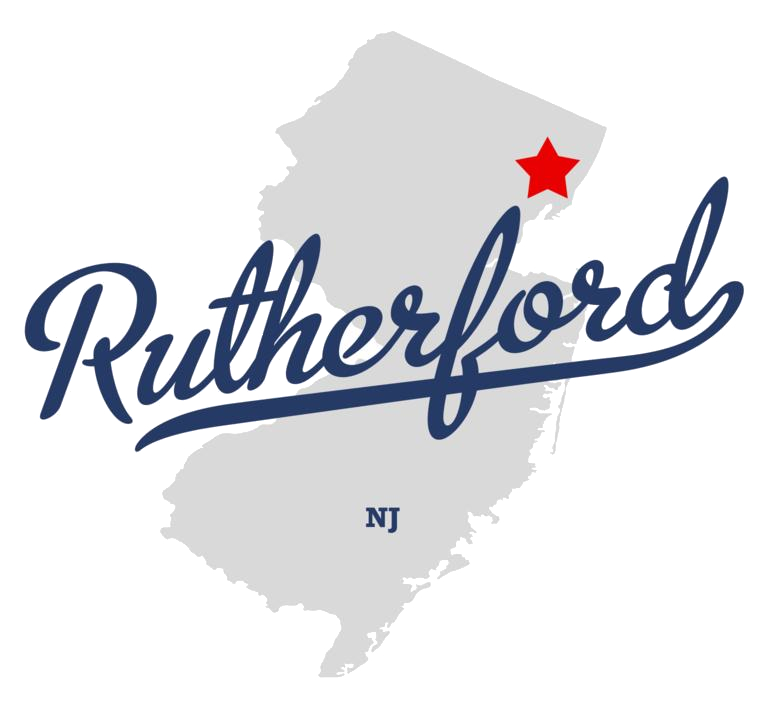

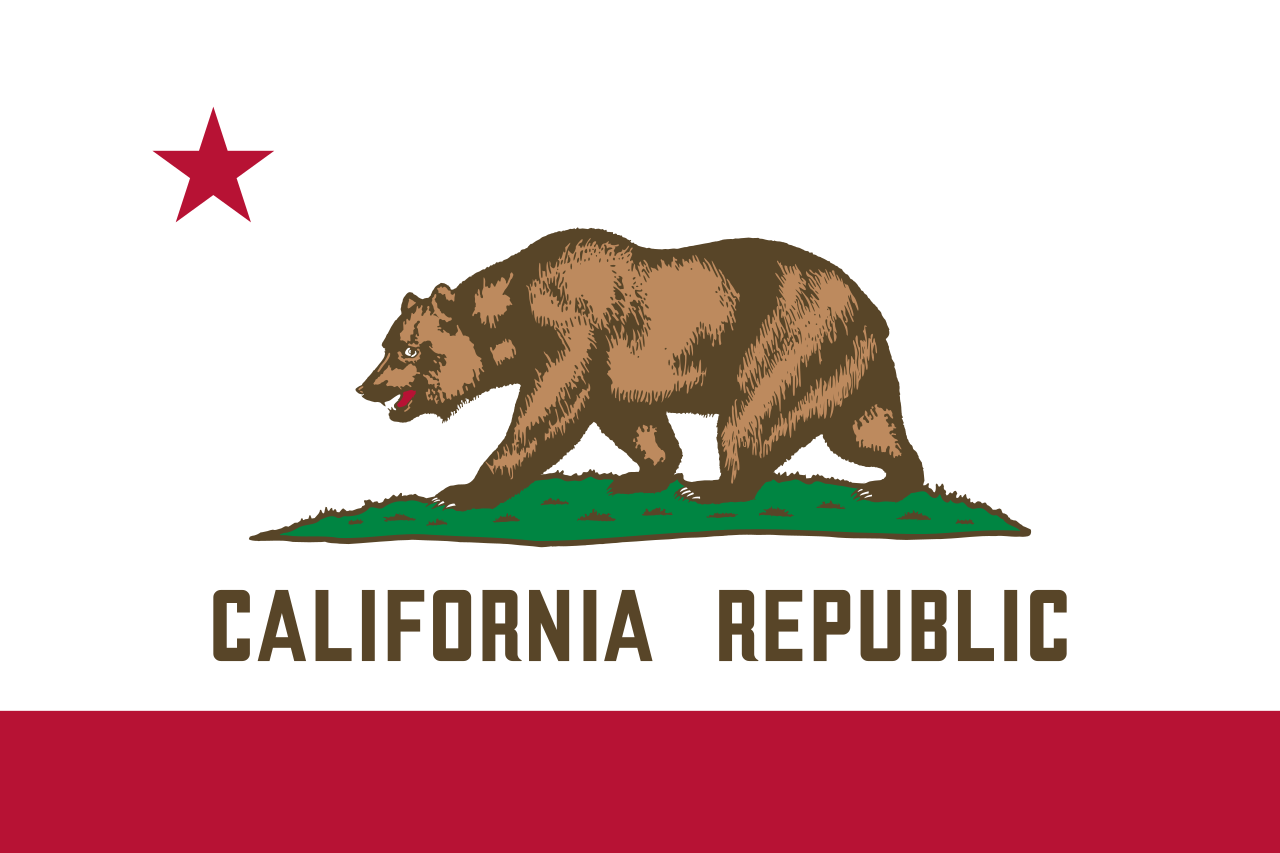 California-CA
California-CA
 FIFA Fussball-Weltmeisterschaft 1994
FIFA Fussball-Weltmeisterschaft 1994

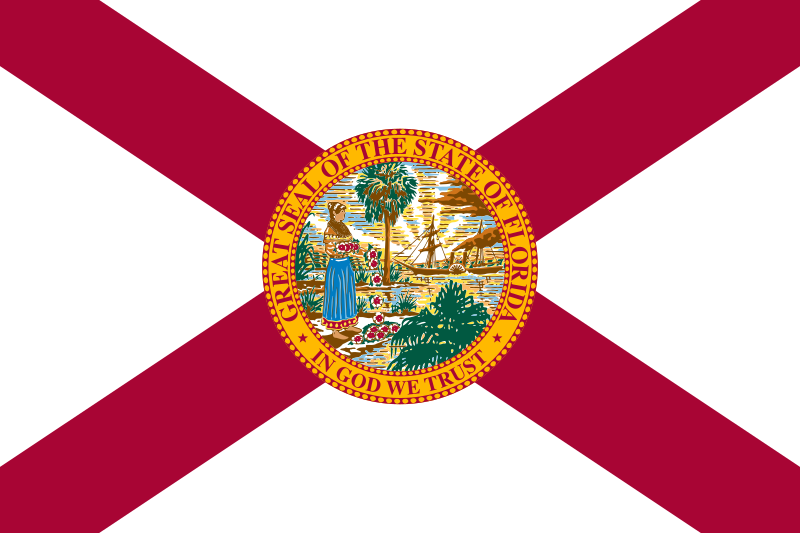 Florida-FL
Florida-FL

 Illinois-IL
Illinois-IL

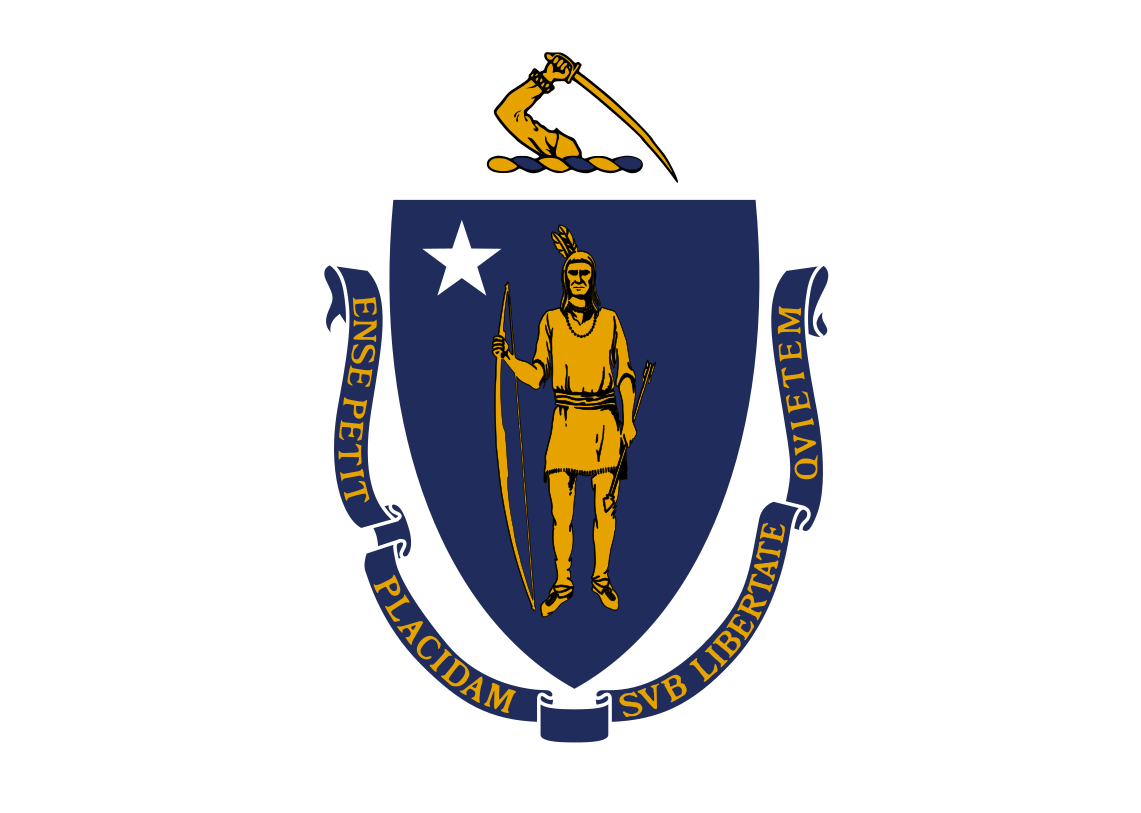 Massachusetts-MA
Massachusetts-MA

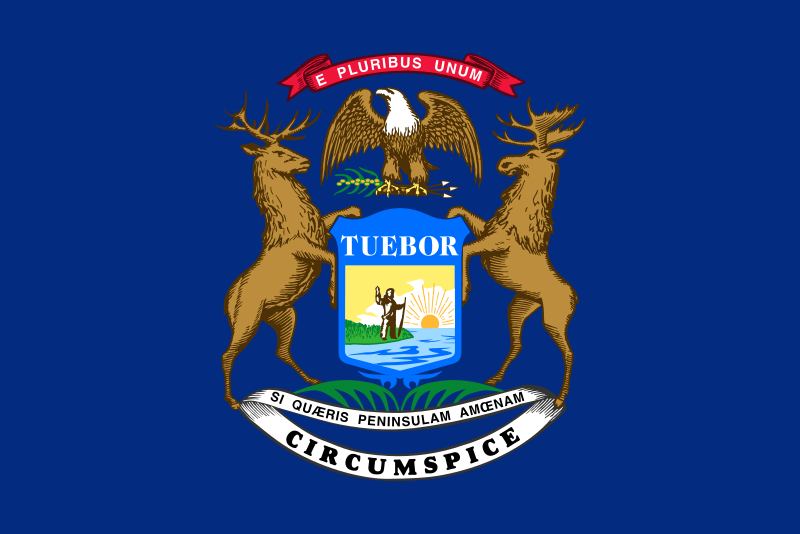 Michigan-MI
Michigan-MI

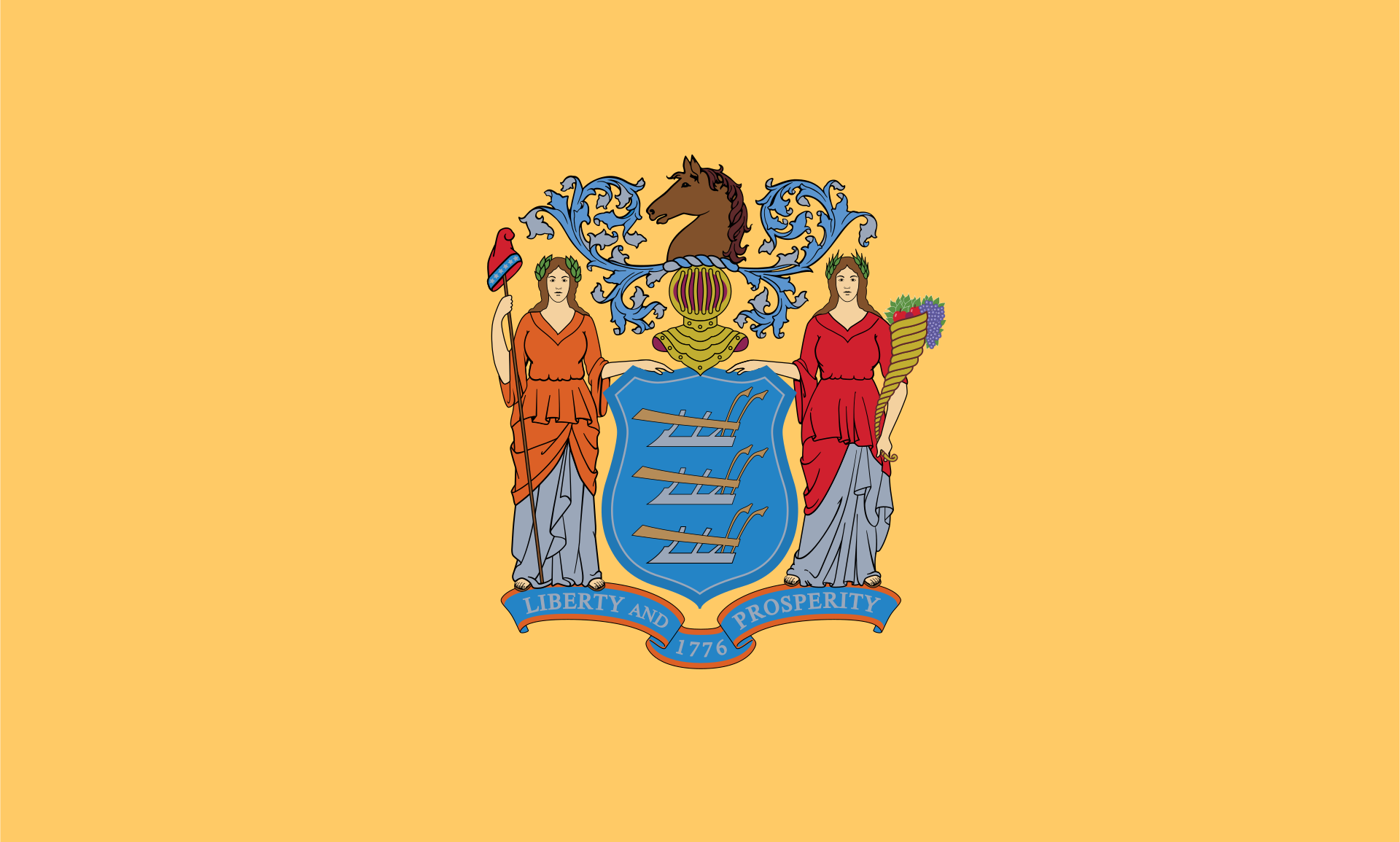 New jersey-NJ
New jersey-NJ

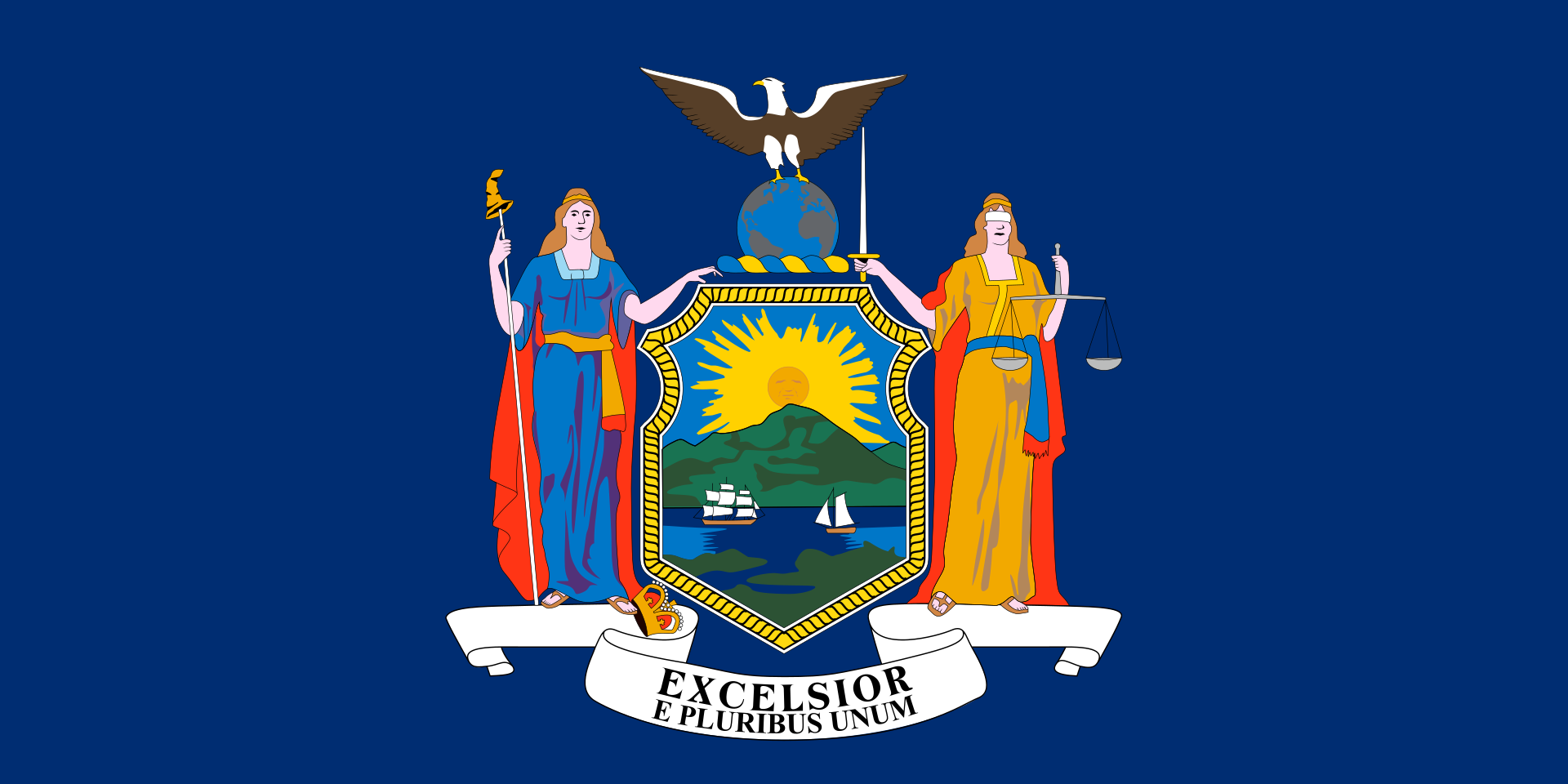 New York-NY
New York-NY

 Texas-TX
Texas-TX
 Vereinigte Staaten
Vereinigte Staaten

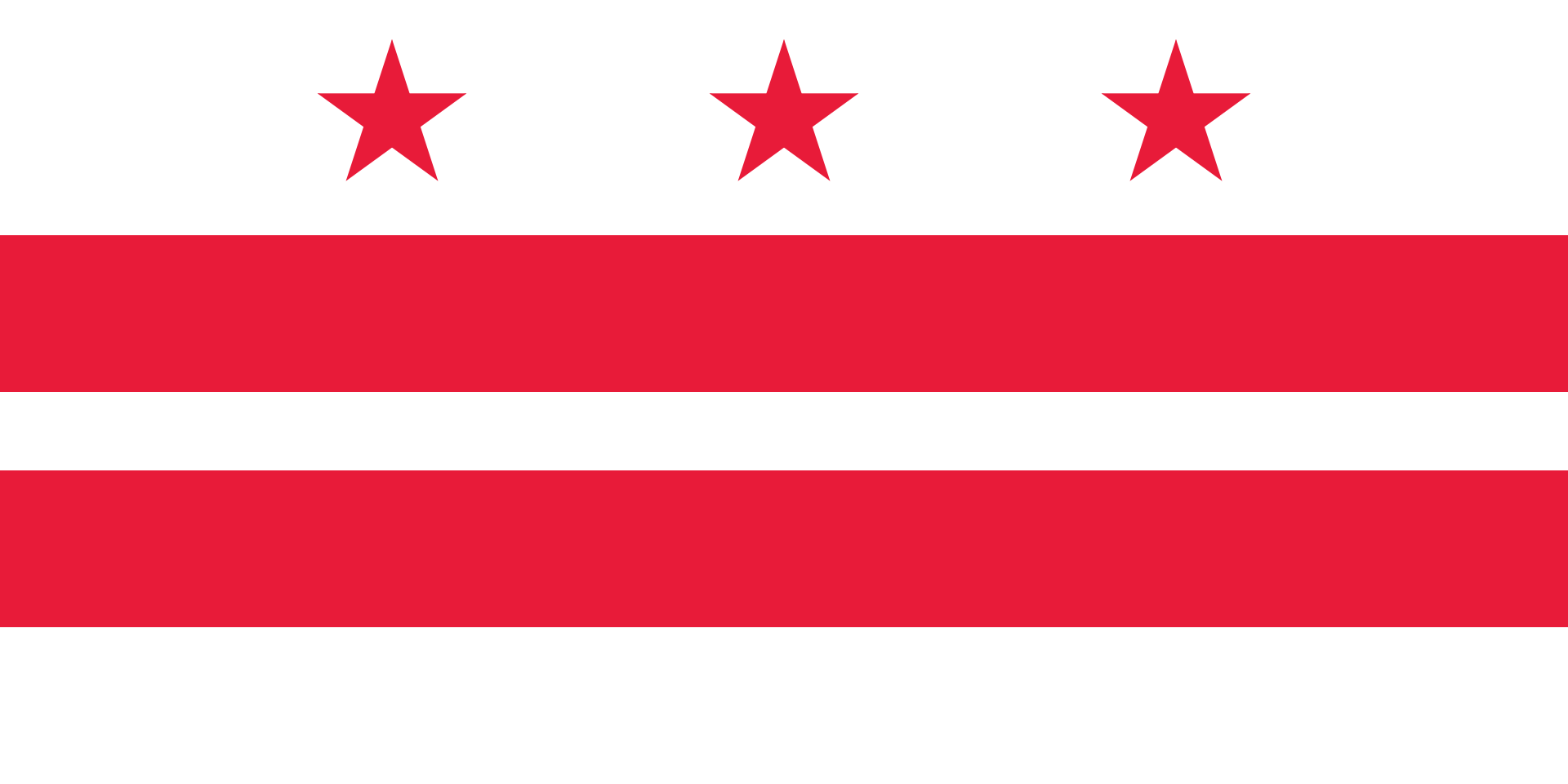 Washington, D.C.
Washington, D.C.
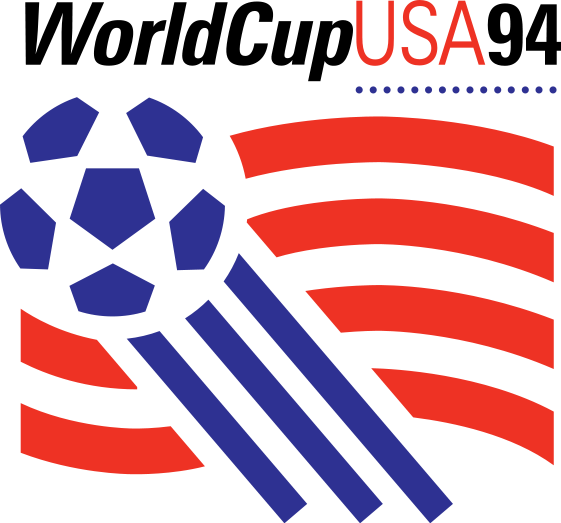
 AFC Champions League 2015
AFC Champions League 2015
 AFC Champions League 2016
AFC Champions League 2016
 AFC Champions League 2017
AFC Champions League 2017
 AFC Champions League 2018
AFC Champions League 2018
 AFC Champions League 2019
AFC Champions League 2019
 Asian Football Confederation
Asian Football Confederation
 CONCACAF
CONCACAF
 Confederación Sudamericana de Fútbol
Confederación Sudamericana de Fútbol
 Confederation of African Football
Confederation of African Football
 FIFA
FIFA
 FIFA Fussball-Weltmeisterschaft 1990
FIFA Fussball-Weltmeisterschaft 1990
 FIFA Fussball-Weltmeisterschaft 1994
FIFA Fussball-Weltmeisterschaft 1994
 FIFA Fussball-Weltmeisterschaft 1998
FIFA Fussball-Weltmeisterschaft 1998
 FIFA Fussball-Weltmeisterschaft 2002
FIFA Fussball-Weltmeisterschaft 2002
 FIFA Fussball-Weltmeisterschaft 2006
FIFA Fussball-Weltmeisterschaft 2006
 FIFA Fussball-Weltmeisterschaft 2010
FIFA Fussball-Weltmeisterschaft 2010
 FIFA Fussball-Weltmeisterschaft 2014
FIFA Fussball-Weltmeisterschaft 2014
 FIFA Fussball-Weltmeisterschaft 2018
FIFA Fussball-Weltmeisterschaft 2018
 FIFA Fussball-Weltmeisterschaft 2022
FIFA Fussball-Weltmeisterschaft 2022

 FIFA Fussball-Weltmeisterschaft 2026
FIFA Fussball-Weltmeisterschaft 2026
 FIFA-Konföderationen-Pokal 2013
FIFA-Konföderationen-Pokal 2013
 FIFA-Konföderationen-Pokal 2017
FIFA-Konföderationen-Pokal 2017
 Fußball-Weltmeisterschaft der Frauen 1991
Fußball-Weltmeisterschaft der Frauen 1991
 Fußball-Weltmeisterschaft der Frauen 1995
Fußball-Weltmeisterschaft der Frauen 1995
 Fußball-Weltmeisterschaft der Frauen 1999
Fußball-Weltmeisterschaft der Frauen 1999
 Fußball-Weltmeisterschaft der Frauen 2003
Fußball-Weltmeisterschaft der Frauen 2003
 Fußball-Weltmeisterschaft der Frauen 2007
Fußball-Weltmeisterschaft der Frauen 2007
 Fußball-Weltmeisterschaft der Frauen 2011
Fußball-Weltmeisterschaft der Frauen 2011
 Fußball-Weltmeisterschaft der Frauen 2015
Fußball-Weltmeisterschaft der Frauen 2015
 Fußball-Weltmeisterschaft der Frauen 2019
Fußball-Weltmeisterschaft der Frauen 2019
 Oceania Football Confederation
Oceania Football Confederation
 Schweiz
Schweiz
 Zürich
Zürich

 Sport
Sport
 (F)Fußball-Weltmeisterschaft der Frauen
(F)Fußball-Weltmeisterschaft der Frauen

 Sport
Sport
 (F)AFC Champions League
(F)AFC Champions League

 Sport
Sport
 (F)Internationale Fußball-Ligen
(F)Internationale Fußball-Ligen

 Sport
Sport
 (F)CAF Champions League
(F)CAF Champions League

 Sport
Sport
 (F)CONCACAF Champions League
(F)CONCACAF Champions League

 Sport
Sport
 (F)Copa Libertadores
(F)Copa Libertadores

 Sport
Sport
 (F)UEFA Champions League
(F)UEFA Champions League

 Sport
Sport
 (F)Fußball-Europameisterschaft
(F)Fußball-Europameisterschaft

 Sport
Sport
 (F)FIFA U-20-Fußball-Weltmeisterschaft
(F)FIFA U-20-Fußball-Weltmeisterschaft

 Sport
Sport
 (F)FIFA-Konföderationen-Pokal
(F)FIFA-Konföderationen-Pokal

 Sport
Sport
 (F)Fußball-Asienmeisterschaft
(F)Fußball-Asienmeisterschaft

 Sport
Sport
 (F)Fußball-Afrikameisterschaft
(F)Fußball-Afrikameisterschaft
 UEFA Champions League 2015/16
UEFA Champions League 2015/16
 UEFA Champions League 2016/17
UEFA Champions League 2016/17
 UEFA Champions League 2017/18
UEFA Champions League 2017/18
 UEFA Champions League 2018/19
UEFA Champions League 2018/19
 UEFA Champions League 2019/20
UEFA Champions League 2019/20
 UEFA Europa League 2017/18
UEFA Europa League 2017/18
 UEFA Europa League 2018/19
UEFA Europa League 2018/19
 UEFA Europa League 2019/20
UEFA Europa League 2019/20
 UEFA Nations League
UEFA Nations League
 Union of European Football Associations
Union of European Football Associations

 Wichtige internationale Organisationen
Wichtige internationale Organisationen

国际足球联合会(法语:Fédération Internationale de Football Association;英语:International Federation of Association Football[注 1]),简称国际足联(FIFA),是管理英式足球、室内五人足球和沙滩足球的国际体育组织,下辖211个会员协会。总部设于瑞士苏黎世。现任主席为吉安尼·因凡蒂诺。国际足联负责组织世界重大足球赛事,当中最著名的是4年举行一次的世界杯。[3]
Die Fédération Internationale de Football Association (deutsch Internationaler Verband des Association Football), kurz FIFA oder Fifa, ist ein privater Verband, der „die Kontrolle des Association Football in all seinen Formen“ zum Zweck hat.[3] Der Weltfußballverband ist ein gemeinnütziger Verein im Sinne der Artikel 60 ff. des Schweizerischen Zivilgesetzbuches mit Sitz in Zürich und im Handelsregister eingetragen.[4][5][6] Die FIFA muss als nicht steuerbefreiter Verein im Kanton Zürich eine reduzierte Gewinnsteuer von 4 % entrichten.[1][2]
Die FIFA erwirtschaftet in ihrer aktuellen Vierjahresertragsperiode 5,66 Milliarden Dollar, die zu 89 % aus der Vermarktung der von ihr organisierten Männer-Fußball-WM stammen. Darüber hinaus organisiert sie auch die Frauen-Fußball-WM und zahlreiche weitere Turniere. Ihr Präsident ist Gianni Infantino.
国際サッカー連盟(こくさいサッカーれんめい、仏: Fédération Internationale de Football Association)は、サッカー(アソシエーション式フットボール)の国際競技連盟であり、スイスの法律に基づいた自立法人である。略称はFIFA(フランス語発音: [fifa] フィファ、英語発音: [ˈfiːfə] フィーファ)。本部はスイスのチューリッヒに置かれている。
2018年時点で全211の国内競技連盟が加盟し[1]、国際競技連盟としては世界最大である[3]。FIFAワールドカップ・FIFA女子ワールドカップの主催が、もっとも大きな任務となっている。
The Fédération Internationale de Football Association[a] (FIFA /ˈfiːfə/ FEE-fə; French for International Federation of Association Football; Spanish: Federación Internacional de Fútbol Asociación; German: Internationaler Verband des Association Football) is a non-profit organization which describes itself as an international governing body of association football, fútsal, beach soccer, and efootball. It is the highest governing body of football.
FIFA was founded in 1904[3] to oversee international competition among the national associations of Belgium, Denmark, France, Germany, the Netherlands, Spain, Sweden, and Switzerland. Headquartered in Zürich, its membership now comprises 211 national associations. Member countries must each also be members of one of the six regional confederations into which the world is divided: Africa, Asia, Europe, North & Central America and the Caribbean, Oceania, and South America.
Today, FIFA outlines a number of objectives in the organizational Statues, including growing football internationally, providing efforts to ensure football is accessible to everyone, and advocating for integrity and fair play.[4] FIFA is responsible for the organization and promotion of football's major international tournaments, notably the World Cup which commenced in 1930 and the Women's World Cup which commenced in 1991. Although FIFA does not solely set the rules of football, that being the responsibility of the International Football Association Board of which FIFA is a member, it applies and enforces the rules across all FIFA competitions.[5] All FIFA tournaments generate revenue from sponsorship; in 2018, FIFA had revenues of over US $4.6 billion, ending the 2015–2018 cycle with a net positive of US$1.2 billion, and had cash reserves of over US$2.7 billion.[6]
Reports by investigative journalists have linked FIFA leadership with corruption, bribery, and vote-rigging related to the election of FIFA president Sepp Blatter and the organization's decision to award the 2018 and 2022 World Cups to Russia and Qatar, respectively. These allegations led to the indictments of nine high-ranking FIFA officials and five corporate executives by the U.S. Department of Justice on charges including racketeering, wire fraud, and money laundering. On 27 May 2015, several of these officials were arrested by Swiss authorities, who were launching a simultaneous but separate criminal investigation into how the organization awarded the 2018 and 2022 World Cups. Those among these officials who were also indicted in the U.S. are expected to be extradited to face charges there as well.[7][8][9] Many officials were suspended by FIFA's ethics committee including Sepp Blatter[10] and Michel Platini.[11] In early 2017 reports became public about FIFA president Gianni Infantino attempting to prevent the re-elections[12] of both chairmen of the ethics committee, Cornel Borbély and Hans-Joachim Eckert, during the FIFA congress in May 2017.[13][14] On 9 May 2017, following Infantino's proposal,[15] FIFA Council decided not to renew the mandates of Borbély and Eckert.[15] Together with the chairmen, 11 of 13 committee members were removed.[16]
La Fédération internationale de football association2 (souvent désignée par l'acronyme FIFA) est la fédération sportive internationale du football, du futsal et du football de plage. Association des fédérations nationales fondée le 21 mai 1904 à Paris, elle a pour vocation de gérer et de développer le football dans le monde. La Coupe du monde de football est créée en 1924 par Jules Rimet3, président de la fédération internationale de 1920 à 1954. Le terme Football Association est le nom originel du football, utilisé pour le distinguer des autres sports de ballon.
Fondée par les fédérations d'Allemagne, de Belgique, du Danemark, d'Espagne, de France, des Pays-Bas, de Suède et de Suisse, elle compte au 13 mai 2016 211 associations nationales affiliées à travers le monde, qui doivent être reconnues par l'une des six confédérations continentales. Son siège est situé depuis 1932 à Zurich, en Suisse.
Bien qu'étant officiellement une association à but non lucratif, la FIFA brasse un chiffre d'affaires très important du fait de l'organisation des compétitions et de leur sponsoring. En 2013, la FIFA génère 1,3 milliard de dollars de chiffre d'affaires, et dispose de réserves évaluées à 1,4 milliard de dollars4. La FIFA est chargée de l'organisation des grands tournois mondiaux, et notamment des Coupes du monde masculines, depuis le 13 juillet 1930, et féminines, depuis le 30 novembre 1991.
Après plusieurs années de rumeurs et d'enquêtes de journalistes sur les affaires financières au sein de la FIFA, notamment autour de l'attribution de l'organisation des Coupes du monde de 2018 et 2022 à la Russie et au Qatar, une enquête lancée par le département de la Justice des États-Unis pour des faits de corruption aboutit à un grand scandale en 2015, à la suite duquel le président Sepp Blatter, le 2 juin 2015, trois jours après sa réélection pour un cinquième mandat, annonce qu'il convoque un congrès extraordinaire, prévu en février 2016, afin de remettre son mandat de président à disposition. Le 8 octobre 2015, la commission d'éthique de la FIFA suspend Sepp Blatter de manière provisoire, pendant 90 jours5. Le 21 décembre 2015, la commission suspend Sepp Blatter pour 8 ans6. Cette suspension est ramenée à six ans le 24 février 2016, peu avant l'élection de son successeur, Gianni Infantino, le 26 février 2016.
La Fédération Internationale de Football Association (in italiano "Federazione internazionale di calcio"[Nota 1]), più nota con l'acronimo FIFA, è la federazione internazionale che governa gli sport del calcio, del calcio a 5 e del beach soccer. La sua sede si trova a Zurigo, in Svizzera, e il presidente è Gianni Infantino, eletto nel 2016.
La federazione fu fondata a Parigi il 21 maggio 1904 e si occupa dell'organizzazione di tutte le manifestazioni intercontinentali degli sport sopraccitati, tra le quali la più importante è sicuramente il Campionato mondiale di calcio, che premia il vincitore con il trofeo della Coppa del Mondo. Tale torneo viene disputato ogni quattro anni dal 1930, eccetto che per il 1942 e il 1946 a causa della Seconda guerra mondiale, e la federazione ha il compito di scegliere il paese organizzatore che ospita la fase finale della manifestazione.
La Fédération Internationale de Football Association2 (en español: Federación Internacional de Fútbol Asociación),3 universalmente conocida por sus siglas FIFA, es la institución que gobierna las federaciones de fútbol en todo el planeta. Se fundó el 21 de mayo de 1904 y tiene su sede en Zúrich, Suiza. Forma parte del IFAB, organismo encargado de modificar las reglas del juego. Además, la FIFA organiza la Copa Mundial de Fútbol, los otros campeonatos del mundo en sus distintas categorías, ramas y variaciones de la disciplina, y los Torneos Olímpicos a la par del COI.
La FIFA agrupa 211 asociaciones o federaciones de fútbol de distintos países, contando con 17 países afiliados más que la Organización de las Naciones Unidas, tres menos que la Asociación Internacional de Federaciones de Atletismo y dos menos que la Federación Internacional de Baloncesto.45
Междунаро́дная федера́ция футбо́ла[1] (фр. Fédération Internationale de Football Association, сокращённо FIFA, в русской транслитерации — ФИФА́) — главная футбольная организация, являющаяся крупнейшим международным руководящим органом в футболе, мини-футболе и пляжном футболе. Штаб-квартира ФИФА находится в швейцарском городе Цюрихе.
Под эгидой ФИФА проходят все футбольные турниры всемирного масштаба, в числе которых чемпионат мира ФИФА, аналогичный турнир среди женщин, молодёжные и юношеские турниры, Кубок конфедераций и клубный чемпионат мира.
 FIFA Fussball-Weltmeisterschaft 1994
FIFA Fussball-Weltmeisterschaft 1994
 Fußball-Weltmeisterschaft der Frauen 1999
Fußball-Weltmeisterschaft der Frauen 1999
 Fußball-Weltmeisterschaft der Frauen 2003
Fußball-Weltmeisterschaft der Frauen 2003

 FIFA Fussball-Weltmeisterschaft 1994
FIFA Fussball-Weltmeisterschaft 1994

 Musik
Musik

 Sport
Sport
 (*)Fußballlieder
(*)Fußballlieder

 Sport
Sport
 (F)Fussball-Weltmeisterschaft
(F)Fussball-Weltmeisterschaft
 Vereinigte Staaten
Vereinigte Staaten


奥兰多位于中佛罗利达州,是世界上最好的休闲城市之一。湖泊众多,干净的街道、友善的居民及温暖的气候为健行、露营、水上活动、蜜月及家庭旅行的最佳去 处。走在奥兰多具有历史性的 Lock Haven 区内,奥兰多自然中心(Orlando Science Center)显眼的铝质圆顶印入眼帘,该自然中心提供个年龄层儿童互动性的展览。在Lock Haven 区内还有奥兰多艺术博物馆(Orlando Museum of Art)、橙县历史博物馆(Orange County Historical Museum)及附近的哈利花园(Harry P. Leu Gardens)。在奥兰多还有老少咸宜的主题乐园,如华德迪士尼世界(Walt Disney World)、环球影城(Universal Studio)、冒险岛乐园(Islands of Adventure), 海洋世界(Sea World)及无数的旅馆,造就了它的观光地位。
奥兰多(英语:Orlando)是位于美国佛罗里达州中部的一座城市,也是橙县(又译奥兰治县)的县治所在,根据美国人口调查局2006年统计,人口共220,186人。2016年3月都会区已上升至2,387,138人。
奥兰多位于中佛罗里达州,是一座休闲城市。湖泊众多,干净的街道、友善的居民及温暖的气候为健行、露营、水上活动、蜜月及家庭旅行的最佳去处。走在奥兰多具有历史性的 Lock Haven 区内,奥兰多自然中心(Orlando Science Center)显眼的铝质圆顶印入眼帘,该自然中心提供个年龄层儿童互动性的展览。在Lock Haven 区内还有奥兰多艺术博物馆(Orlando Museum of Art)、橙县历史博物馆(Orange County Historical Museum)及附近的哈利花园(Harry P. Leu Gardens)。在奥兰多还有老少咸宜的主题乐园,如华德迪士尼世界(Walt Disney World)、环球影城(Universal Studio)、冒险岛乐园(Islands of Adventure), 海洋世界(Sea World)及无数的旅馆,造就了它的观光地位。
由华纳兄弟与环球影城公司合作兴建的哈利波特的魔法世界,位在两大电影制片商在奥兰多面积达787英亩的主题公园园址,霍格华兹城堡与人工白雪覆盖的霍格莫德村,将哈利波特书中的魔法世界真实呈现。于2009年完工,造价数十亿美元。
就像在阳光地带的各大城市,奥兰多在1980年代和进入21世纪的第一个十年迅速发展。奥兰多是中佛罗里达大学的本部所在地,按大学生和硕博士研究生数量算几乎都是全美国最大的大学,主要在培育在肯尼迪航天中心和卡纳维拉尔角空军基地,以支持美国的太空计划的理工人才。在全球城市研究小组的名单上奥兰多被列为“伽马”级世界城市。2009年根据皮尤研究中心研究,基于人们所希望的生活,奥兰多被列为第四大最流行的美国城市。
Orlando ist eine Stadt und County Seat des Orange County im US-Bundesstaat Florida mit 238.300 Einwohnern (Stand: 2010). Nach Jacksonville, Miami, Tampa und Saint Petersburg ist Orlando die fünftgrößte Stadt Floridas. Die Stadt ist Teil der Metropolitan Statistical Area (MSA) Orlando–Kissimmee–Sanford (kurz auch Greater Orlando) mit rund 2,4 Millionen Einwohnern (Stand: 2016).
Orlando ist vor allem durch die Themenparks von Walt Disney World und Universal Studios bekannt und gilt als die „Touristen-Hauptstadt der USA“.[1] 2014 war Orlando mit über 62 Millionen Besuchern aus aller Welt das meistbesuchte Touristenziel der Vereinigten Staaten.[2]
オーランド(Orlando, 英語発音: [ɔrˈlændoʊ] オランドウ、オァランドウ)は、アメリカ合衆国フロリダ州中央部、オレンジ郡の郡庁所在地であり、全米屈指の観光・保養都市として知られる。
日本語ではオルランドやオランドーの表記も見られる。
2009年現在の推計人口で、市域人口は235,860人、都市圏 (MSA) の人口は2,082,421人で全米27位、広域都市圏(CSA)の人口は2,747,614人である。フロリダ州最大の内陸都市。そして、南東フロリダ大都市圏(マイアミ・フォートローダーデール・ウェストパームビーチ)、タンパ湾大都市圏(タンパ・セントピーターズバーグ・クリアウォーター)に次ぐ、州第3の大都市圏となっており、2000年の国勢調査と比較しても40万人以上の人口増加となっている。
また、オーランドはアメリカで第2の規模を誇る州立総合大学 University of Central Florida がキャンパスを構える。
オーランドは全米屈指の観光・保養都市として知られる。市近郊にはウォルト・ディズニー・ワールド・リゾート、ユニバーサル・オーランド・リゾート、シーワールドなど幾つものテーマパーク・遊園地を有している。またゴルフ場も100ヶ所以上を数える。豪華なリゾートホテルが林立し、郊外には幾つものショッピングセンターやアウトレットモールがある。
手つかずの自然も多く残り、自然保護区が多数指定されている。デイトナビーチなど近郊の海岸にはビーチリゾートが発展しており、世界中から多くの観光客が訪れる。スーパーボーイズグループ、バックストリート・ボーイズのホームタウンでもある。
Orlando (/ɔːrˈlændoʊ/) is a city in the U.S. state of Florida and the county seat of Orange County. Located in Central Florida, it is the center of the Orlando metropolitan area, which had a population of 2,509,831, according to U.S. Census Bureau figures released in July 2017. These figures make it the 23rd-largest metropolitan area[8] in the United States, the sixth-largest metropolitan area in the Southern United States, and the third-largest metropolitan area in Florida. As of 2015, Orlando had an estimated city-proper population of 280,257, making it the 73rd-largest city in the United States, the fourth-largest city in Florida, and the state's largest inland city.
The City of Orlando is nicknamed "The City Beautiful," and its symbol is the fountain at Lake Eola. Orlando is also known as "The Theme Park Capital of the World" and in 2016 its tourist attractions and events drew more than 72 million visitors.[9] The Orlando International Airport (MCO or OIA) is the thirteenth-busiest airport in the United States and the 29th-busiest in the world.[10]
As one of the world's most visited tourist destinations, Orlando's famous attractions form the backbone of its tourism industry. The two most significant of these attractions are Walt Disney World, opened by the Walt Disney Company in 1971, and located approximately 21 miles (34 km) southwest of Downtown Orlando in Bay Lake; and the Universal Orlando Resort, opened in 1990 as a major expansion of Universal Studios Florida. With the exception of Walt Disney World, most major attractions are located along International Drive with one of these attractions being the famous Orlando Eye. The city is also one of the busiest American cities for conferences and conventions; the Orange County Convention Center is the second-largest convention facility in the United States.
Like other major cities in the Sun Belt, Orlando grew rapidly from the 1980s up into the first decade of the 21st century. Orlando is home to the University of Central Florida, which is the largest university campus in the United States in terms of enrollment as of 2015. In 2010, Orlando was listed as a "Gamma−" level global city in the World Cities Study Group's inventory.[11] Orlando ranks as the fourth-most popular American city based on where people want to live according to a 2009 Pew Research Center study.[12]
Orlando est une ville des États-Unis, siège du comté d'Orange, en Floride. La ville compte 280 257 habitants en 20171. Son agglomération comprend quant à elle 1 800 000 personnes selon des estimations de 2004 effectuées par le Bureau du recensement des États-Unis. C'est la sixième ville de Floride, et la première située à l'intérieur des terres de l'État. Orlando et ses environs constituent à présent l'une des zones métropolitaines américaines à la croissance la plus rapide.
Elle est surtout connue pour son complexe de loisirs Walt Disney World Resort créé par la Walt Disney Company en 1971, ainsi que pour l'Universal Orlando Resort (1991) composé de deux grands parcs, le premier sur le cinéma Universal Studios le deuxième avec des attractions en rapport avec les héros de comics Islands of Adventure. Sans oublier City Walk, lieu composé de restaurants, bars, cinémas et discothèques aux thèmes divers. La zone consacrée au monde magique de la saga Harry Potter n'est pas un parc à part entière mais un land du parc Universal Studios et un land d'Islands of Adventure. On trouve également dans la ville un SeaWorld, parc d'attractions dont le concept est basé sur des spectacles avec des animaux. Pour la partie restauration, une avenue nommée International Drive regroupe tous les thèmes de restauration possibles avec notamment le McDonald's avec l'aire de jeu la plus grande du monde. Le centre de la ville est en cours de restauration, avec la création d'un nouveau parc à thème, Gatorland. Orlando attire 52 millions de touristes par an et est la deuxième ville hôtelière du pays. Orlando est une des villes qui a connu le plus important apport de population des États-Unis d'Amérique, nombre de retraités étant venus s'installer à Orlando pour sa douceur de vivre, sa situation géographique et son climat, caractères qu'elle partage avec le reste de la Sun Belt.Le symbole d'Orlando est la fontaine du lac Eola (en).
Orlando (AFI: /orˈlando/[2]; in inglese americano [ɔːɹˈlændoʊ̯][3]) è una città degli Stati Uniti d'America, capoluogo della Contea di Orange, in Florida. Secondo il censimento del 2000 la popolazione era di 185.951 (area metropolitana 1.644.561). Una stima del 2006 parla di 220.186 abitanti (2.633.282 l'area metropolitana) facendone la sesta città più grande della Florida. È inoltre a capo dell'Area Statistica Metropolitana (MSA) Orlando-Kissimee. Orlando ospita la seconda più grande università della Florida, la University of Central Florida.
La città è conosciuta dai turisti per le numerose attrazioni in zona, in particolar modo la vicina Walt Disney World Resort, che si trova al di fuori dei confini cittadini di Orlando. Altre aree di attrazione sono SeaWorld e Universal Orlando Resort. Nonostante si trovi lontano dalle principali attrazioni turistiche Orlando sta vivendo un momento di rilancio in tal senso con molti progetti in costruzione o in pianificazione. Per Orlando si stimano 52 milioni di turisti l'anno. Orlando è la seconda città nel paese per numero di stanze d'albergo. Orlando è anche nota per la sua ampia schiera di campi da golf disponibili per golfisti di ogni livello.
Il soprannome della città è "The city beautiful", il suo simbolo è la fontana del lago Eola ed il sindaco attuale è il democratico Buddy Dyer.
La ciudad de Orlando es la sede del condado de Orange y es ciudad central de la zona metropolitana del mismo nombre, así como también cabecera de la región conocida como Florida Central, en el estado de Florida, del sudeste de Estados Unidos. Según el censo estadounidense de 2000, la ciudad tenía una población de 185.951 habitantes (la población en el área metropolitana es de 1.644.561). Un censo local de la población en 2003 arrojó un resultado de 199.336 habitantes (1,8 millones en el área metropolitana). Es la sexta ciudad más grande de Florida y la ciudad no costera más grande. Es además la cabecera de la tercera área metropolitana más grande del estado, detrás de Miami-Fort Lauderdale y Tampa-San Petersburgo.
La ciudad es principalmente conocida por sus hoteles y sus muchas atracciones turísticas de interés infantil y juvenil, particularmente Walt Disney World Resort y Universal Orlando Resort. Otra atracción incluye SeaWorld. El centro de la ciudad de Orlando, más conocido como Downtown Orlando, ha sido objeto de continua reestructuración, a pesar de estar alejada de las principales atracciones turísticas. Es sede de Orlando Sentinel, uno de los periódicos más grandes del estado, de los Orlando Magic, un equipo de baloncesto profesional de la NBA, y del Orlando City Soccer Club de la Major League Soccer; además alberga el torneo de golf Arnold Palmer Invitational del PGA Tour.
Орла́ндо[1] (англ. Orlando) — четвёртый по величине город штата Флорида и самый крупный внутренний город полуострова Флорида с населением 2 387 138 человек (2016) во всей агломерации, что делает её 24-м по величине в США, шестым по величине мегаполисом в южной части Соединённых Штатов и третьим по величине мегаполисом в штате Флорида. По оценке Бюро переписи населения США, в 2010 году в городе проживало 238 300 человек, по оценке 2016 года — 277 173 человека, что делает город 73-м в списке городов США по численности населения, четвертым по величине городом во Флориде и самым крупным внутренним городом штата. Орландо был назван в честь Орландо Ривса, по одному из предположений, солдата армии США, который участвовал во второй войне с семинолами и погиб в этой области.
Орландо известен как мировая столица тематических парков; в 2014 году его достопримечательности, парки, конференции и конвенции посетило более 62 миллионов посетителей[2]. Международный аэропорт Орландо (MCO) является тринадцатым по загруженности аэропорт в Соединённых Штатах и 29 самых оживленных в мире[3].
Наиболее известные и самые посещаемые[4] в США и за их пределами достопримечательности Орландо образуют основу индустрии туризма: Диснейуорлд, расположенный примерно в 34 км к юго-западу от Орландо в Лейк-Буэна-Виста, который разместился на территории в 24 тысячи гектаров (год открытия — 1971); Юнивёрсал Резорт, открывшийся в 1999 году как расширение Юнивёрсал Студиос Флорида; SeaWorld; Gatorland; и Wet 'N Wild. За исключением Walt Disney World, большинство основных достопримечательностей расположены вдоль улицы Интернешнл Драйв. Город также является одним из самых оживленных американских городов для проведения конференций и конвенций.
Город долгое время являлся небольшим поселением в тропической заболоченной сельве, кишащей москитами и аллигаторами. Однако, как и другие крупные города «солнечного пояса», Орландо быстро рос в течение 1980-х годов и в первом десятилетии 21-го века. В Орландо расположен Университет Центральной Флориды, являющийся вторым по количеству студентов в Соединенных Штатах. Орландо занимает четвёртое место в списке наиболее привлекательных для проживания американских городов[5].
В расовом отношении город также претерпел сильные изменения. В 2000 году 50,8 % населения составляли белые, 17,5 % — латиноамериканцы, 26,9 % — афроамериканцы, 2,7 % — азиаты[6].


 FIFA Fussball-Weltmeisterschaft 1994
FIFA Fussball-Weltmeisterschaft 1994

 Finanz
Finanz
 ***Globales Finanzzentrum/Global Financial Center
***Globales Finanzzentrum/Global Financial Center
 Fußball-Weltmeisterschaft der Frauen 2003
Fußball-Weltmeisterschaft der Frauen 2003

 Geschichte
Geschichte
 N 2000 - 2100 nach Christus
N 2000 - 2100 nach Christus

 Geschichte
Geschichte
 M 1500 - 2000 nach Christus
M 1500 - 2000 nach Christus
 Vereinigte Staaten
Vereinigte Staaten

 Washington, D.C.
Washington, D.C.

华盛顿哥伦比亚特区(英语:Washington, D.C.),是美国的首都,原称哥伦比亚特区[注 1](District of Columbia,缩写为 D.C.),以及简称华盛顿(Washington)、特区(the District)等。中文通常简称华府。华盛顿哥伦比亚特区是大多数美国联邦政府机关、与各国驻美大使馆的所在地,也是世界银行、国际货币基金、美洲国家组织等国际组织总部的所在地,并拥有为数众多的博物馆与文化史迹。哥伦比亚特区是美国最富裕、财富高度集中的地区;该地区2015年的人均生产总值为181,185美元,冠绝全美。
1776年美国独立时的首都是费城,之后因独立战争和国家新立而屡有变迁,到1785年开始纽约被定为美国的首都。1790年7月1日,国会通过《首都选址法》,决定将首都从纽约迁至波多马克河和安那考斯迪亚河汇合处附近;但完成正式迁都前先由费城暂代首都。1800年,美国联邦政府部门从临时首都的费城迁往建设完成的华盛顿,华盛顿开始作为美国首都正式运作至今[3]。华盛顿哥伦比亚特区实际上是由美国国会直接管辖的联邦地区,因此不属于美国的任何州份。
华盛顿哥伦比亚特区位于美国东岸的中大西洋地区,属马里兰州和弗吉尼亚州的交界处,两州界河波多马克河由西北向东南流贯特区,形成特区西面的天然界限。成立之初,哥伦比亚特区是一个边长10英里(16千米)的长方形区域,不仅包括了特区现在的全部范围,还包括波多马克河西岸弗吉尼亚州亚历山德里亚县,即今日的阿灵顿县以及亚历山德里亚市。特区成立后不久,西岸的居民就因为国会过度重视东岸以及蓄奴等问题,发起了回归弗吉尼亚的运动,经他们多次请愿,美国国会于1846年7月9日通过法案,并经弗吉尼亚人民大会批准,将波多马克河南岸的土地交还南方的弗吉尼亚州。特区设立早期,波多马克河北岸有乔治城镇、华盛顿市及华盛顿县三个分开的行政区划;其中建立于1791年的华盛顿市乃为彰显乔治·华盛顿对美国建国的贡献而命名,后来发展为特区中的核心城市。依据一项1871年的立法,前述三区于1878年合并为华盛顿市,而联邦管辖的特区及华盛顿市地方政府从此辖区重叠,因此产生今日使用的“华盛顿哥伦比亚特区”合称。
Der District of Columbia oder Washington, D.C. [ˈwɔʃɪŋtn̩] ist Bundesdistrikt, Regierungssitz und seit 1800 die Hauptstadt der Vereinigten Staaten. Der Distrikt ist kein Bundesstaat und gehört auch zu keinem, er ist vielmehr dem Kongress der Vereinigten Staaten direkt unterstellt. Trotz Namensgleichheit mit dem Bundesstaat Washington wird Washington, D.C. im deutschen Sprachraum meist nur „Washington“ genannt. D.C. steht dabei für District of Columbia.
Bei der Volkszählung 2010 hatte Washington, D.C. 601.723 Einwohner.[1] Das United States Census Bureau schätzte die Einwohnerzahl zum 1. Juli 2015 auf 672.228 Einwohner, nach einem stetigen Abfall der Bevölkerung seit 1950 der erste größere Zuwachs.[2] Der Großraum Washington[3] hatte 5.582.170 Einwohner. Zusammen mit dem benachbarten Großraum Baltimore hatte die Region laut Zensus insgesamt 8.572.971 Einwohner.[4]
Mit dem Weißen Haus als Amts- und Wohnsitz des Präsidenten und dem Kapitol, das den Kongress (bestehend aus Senat und Repräsentantenhaus) beherbergt, sowie dem Obersten Gerichtshof befinden sich die Spitzen aller drei verfassungsmäßigen Gewalten in der Stadt. Washington ist darüber hinaus Sitz des Internationalen Währungsfonds, der Weltbank und der Organisation Amerikanischer Staaten.
ワシントンD.C.(ワシントン・ディーシー、英: Washington, D.C.)は
同国東海岸、メリーランド州とヴァージニア州に挟まれたポトマック川河畔に位置する。
現代の主要都市としては狭隘で人口もさほど多くないが、超大国の政府所在地として国際的に強大な政治的影響力を保持する世界都市であり、また金融センターとしても高い重要性を持つ。首都としての機能を果たすべく設計された、計画都市である[† 1]。
Washington, D.C., formally the District of Columbia and commonly referred to as Washington or D.C., is the capital of the United States of America.[4] Founded after the American Revolution as the seat of government of the newly independent country, Washington was named after George Washington, first President of the United States and Founding Father.[5] Washington is the principal city of the Washington metropolitan area, which has a population of 6,131,977.[6] As the seat of the United States federal government and several international organizations, the city is an important world political capital.[7] Washington is one of the most visited cities in the world, with more than 20 million annual tourists.[8][9]
The signing of the Residence Act on July 16, 1790, approved the creation of a capital district located along the Potomac River on the country's East Coast. The U.S. Constitution provided for a federal district under the exclusive jurisdiction of the Congress and the District is therefore not a part of any state. The states of Maryland and Virginia each donated land to form the federal district, which included the pre-existing settlements of Georgetown and Alexandria. Named in honor of President George Washington, the City of Washington was founded in 1791 to serve as the new national capital. In 1846, Congress returned the land originally ceded by Virginia; in 1871, it created a single municipal government for the remaining portion of the District.
Washington had an estimated population of 693,972 as of July 2017, making it the 20th largest American city by population. Commuters from the surrounding Maryland and Virginia suburbs raise the city's daytime population to more than one million during the workweek. The Washington metropolitan area, of which the District is the principal city, has a population of over 6 million, the sixth-largest metropolitan statistical area in the country.
All three branches of the U.S. federal government are centered in the District: U.S. Congress (legislative), President (executive), and the U.S. Supreme Court (judicial). Washington is home to many national monuments and museums, which are primarily situated on or around the National Mall. The city hosts 177 foreign embassies as well as the headquarters of many international organizations, trade unions, non-profit, lobbying groups, and professional associations, including the Organization of American States, AARP, the National Geographic Society, the Human Rights Campaign, the International Finance Corporation, and the American Red Cross.
A locally elected mayor and a 13‑member council have governed the District since 1973. However, Congress maintains supreme authority over the city and may overturn local laws. D.C. residents elect a non-voting, at-large congressional delegate to the House of Representatives, but the District has no representation in the Senate. The District receives three electoral votes in presidential elections as permitted by the Twenty-third Amendment to the United States Constitution, ratified in 1961.
Washington, dans le district de Columbia (en anglais : Washington, District of Columbia), souvent appelée Washington, D.C., The District, ou simplement D.C. (pour éviter la confusion avec l'État de Washington), est une ville indépendante américaine, capitale des États-Unis. Selon les dernières estimations (2013), elle compte 646 449 habitants intra-muros sur une superficie de 177 km2 ; son aire urbaine en compte environ 5,8 millions, la septième des États-Unis.
En tant que capitale fédérale, elle ne fait pas partie des cinquante États de l'Union et dépend directement du gouvernement fédéral. À ce titre, la ville est le siège de nombreuses institutions américaines, telles que la Maison-Blanche, résidence officielle du président ; le Capitole, siège du Congrès (constitué de ses deux chambres : celle des représentants et le Sénat), ainsi que le siège de la Banque mondiale (BM), de la Cour suprême et d'autres organismes fédéraux, comme la Réserve fédérale des États-Unis (Fed). Elle accueille en outre 176 ambassades et représentations diplomatiques.
Washington est créée à la suite de la signature du Residence Act en 1790, qui prévoit la création d'une capitale fédérale. Elle est fondée en janvier 1791, sur les rives du fleuve Potomac, à proximité des villes de Georgetown et d'Alexandria. Nommée en hommage au premier président des États-Unis, George Washington, elle est construite ex nihilo selon un plan hippodamien de l'ingénieur franco-américain Pierre Charles L'Enfant. L'urbanisme diffère de la plupart des autres villes américaines car la construction de gratte-ciel y est interdite : l'architecture de Washington est marquée par une faible hauteur et un héritage de l'architecture coloniale. Peu peuplée durant la première moitié du XIXe siècle, ce n'est qu'à la fin de la guerre de Sécession qu'elle acquiert sa légitimité en tant que capitale, devenant le symbole de l'unité retrouvée.
Située sur la côte atlantique du nord-est du pays, entre le Maryland et la Virginie, la ville se trouve à soixante kilomètres au sud de Baltimore, à deux cents kilomètres de Philadelphie et trois cents kilomètres de New York. Elle marque l'extrémité méridionale de la mégalopole américaine, appelée également BosWash. Les coordonnées géographiques de la ville correspondent au point zéro, d'où sont calculées toutes les distances routières aux États-Unis. Son climat est de type subtropical humide, avec de fortes variations de température entre l'été et l'hiver.
En tant que siège de la plupart des institutions fédérales, l'économie est fortement dépendante des activités gouvernementales, qui représentent jusqu'à 50 % de son PIB au milieu du XXe siècle. Aujourd'hui, l'économie est diversifiée, notamment dans l'industrie de l'armement et de l'informatique.
La population de la ville se stabilise de nos jours autour de 600 000 habitants, après avoir connu une baisse importante depuis la Seconde Guerre mondiale, essentiellement en raison du départ des Blancs pour les banlieues environnantes. Devenue une ville en majorité composée d'Afro-Américains (50,1 %), Washington comprend historiquement plusieurs ghettos — dont certains connaissent actuellement un processus de gentrification — et est depuis sa fondation un bastion du Parti démocrate.
La ville compte plusieurs universités, dont la prestigieuse université de Georgetown, ainsi que la Bibliothèque du Congrès, plus grande bibliothèque au monde.
Washington dispose de services de polices dépendant de la municipalité ; ainsi que la Garde nationale du district de Columbia (en) qui en tant que force fédérale dépend du président lui-même. Le district de Columbia ne dispose donc pas de forces autonomes comme les Polices d'État ou les Forces de défense d'État existant dans les États de l'Union.
Washington D.C. (AFI: /ˈwɔʃʃinton/[2]; in inglese [ˈwɒʃɪŋtən]) è la capitale degli Stati Uniti d'America, con una popolazione di 672 228 abitanti[1] (5 582 170 abitanti nell'area metropolitana)[3]. Si trova sulla costa orientale degli Stati Uniti a circa 50 km dal mare, a sud dello stato del Maryland, a nord dello stato della Virginia e a 374 km circa a sud di New York.
La città di Washington coincide territorialmente e politicamente con il Distretto di Columbia[4] (in inglese: District of Columbia, in sigla D.C., distretto federale previsto dalla Costituzione dell'Unione e formalizzato dal District of Columbia Organic Act del 1801), di cui è parte integrante. Infatti, mentre in origine il distretto comprendeva le contee di Washington (donata dallo stato del Maryland) ed Alexandria (donata dallo stato della Virginia), in seguito ad un referendum del 1846 quest'ultima è tornata allo stato della Virginia e ha cambiato nome in Contea di Arlington.
Di conseguenza con il District of Columbia Organic Act del 1871,[5] il Congresso ha ufficialmente soppresso la contea di Washington, che comprendeva l'attuale città di Washington, sottoponendo l'intero territorio dapprima ad un unico governatore di nomina presidenziale, poi, dal 1845, ad un triumvirato composto da due politici e un ingegnere. Da quel momento la Città di Washington e il Distretto di Columbia divennero la stessa entità, condidivendo la personalità giuridica.[6]
Ciononostante, l'area metropolitana di Washington deborda dai confini del distretto, estendendosi anche su 7 contee del Maryland (Anne Arundel, Calvert, Charles, Frederick, Howard, Montgomery e Prince George's), su 5 contee della Virginia (Arlington, ossia l'ex Contea di Alexandria, Fairfax, Loudon, Prince William e Stafford) e su 5 città autonome dello stesso Stato (Alexandria, Fairfax, Falls Church, Manassas e Manassas Park). Gran parte dell'area è collegata da un servizio di metropolitana.
Nel 1973 le richieste per una maggiore democrazia nel distretto portarono all'approvazione del District of Columbia Home Rule Act,[7] la legge che soppresse il triumvirato e affidò l'amministrazione cittadina a un sindaco eletto dal popolo, il Mayor, e a un Consiglio comunale, il Council of the District. Il distretto, che gode di 3 voti nel collegio dei Grandi elettori del Presidente dell'Unione, non prevede nella propria legislazione la pena di morte.
Hanno sede a Washington le principali istituzioni di governo degli Stati Uniti (Presidente, Congresso, Corte Suprema), molti ministeri ed enti federali, e alcune organizzazioni internazionali, tra cui la Banca Mondiale, il Fondo Monetario Internazionale e l'Organizzazione degli Stati Americani.
Washington D. C. (/ˈwɑʃɪŋtən diˈsi/ en inglés), oficialmente denominado Distrito de Columbia (District of Columbia), es la capital de los Estados Unidos de América. Se administra como distrito federal, una entidad diferente a los cincuenta estados que componen dicha nación, y depende directamente del gobierno federal. El Distrito de Columbia fue fundado el 16 de julio de 1790, y en 1791 se oficializó, dentro del distrito, una nueva ciudad denominada Washington, al este de la ya existente Georgetown. En 1871 se unificaron los gobiernos de estas dos ciudades y del resto de poblaciones del distrito en una sola entidad, D. C.
Se localiza a orillas del río Potomac y está rodeada por los estados de Virginia al oeste, y de Maryland al norte, este y sur.
La ciudad de Washington nació como una ciudad planificada, y fue desarrollada a finales del siglo XVIII para servir como la capital nacional permanente, después de que diversas localidades ostentaran dicha posición desde la independencia del país, en 1776; en tanto, el distrito federal fue formado para marcar la diferencia entre la capital nacional y los estados. La ciudad fue nombrada en honor a George Washington, el primer presidente de los Estados Unidos. El nombre del distrito, Columbia, es el nombre poético de Estados Unidos, en referencia a Cristóbal Colón (en inglés Christopher Columbus), primer explorador en llegar a América. La ciudad es llamada comúnmente Washington, the District (el Distrito) o simplemente D. C. En el siglo XIX también se la conoció como Ciudad Federal o Ciudad de Washington.
Los centros de las tres ramas del Gobierno de los Estados Unidos se ubican en el Distrito. También situadas en la ciudad están las sedes del Banco Mundial, el FMI, la OEA, el BID, y otras instituciones nacionales e internacionales, incluyendo asociaciones profesionales y sindicatos. Debido a su importancia a nivel político, Washington es un lugar de frecuentes manifestaciones y protestas, particularmente en el National Mall. Además es un destino popular entre los turistas, debido a los numerosos monumentos y lugares de interés nacional. La ciudad es un centro de la historia y cultura estadounidense, y en ella se encuentra el complejo de museos más grande del mundo (el Instituto Smithsoniano), además de galerías de arte, universidades, catedrales, centros e instituciones de arte dramático, y escenarios de música nativa.
El Distrito de Columbia y la ciudad de Washington son gobernados por un solo gobierno municipal. Para cuestiones prácticas son considerados como la misma entidad. Éste no siempre ha sido el caso: hasta 1871 —cuando Georgetown dejó de ser una ciudad separada— había múltiples jurisdicciones dentro del Distrito.3 A pesar de que hay un gobierno municipal y un alcalde, el Congreso tiene la autoridad suprema sobre la ciudad y el distrito, lo que resulta en que los ciudadanos tengan menos autogobierno que los residentes de los estados. El Distrito tiene un delegado en el Congreso, que participa en los debates pero no tiene derecho a voto.
La población del Distrito de Columbia es de 646 449 habitantes en 2013 según estimaciones de la Oficina del Censo de los Estados Unidos.1 El área metropolitana de Washington D. C. es la octava más grande de Estados Unidos, con más de 5 millones de residentes,2 y el área metropolitana que forma junto a la cercana Baltimore tiene una población que excede los 8 millones. Si Washington D. C. fuera un estado, estaría último en cuanto a superficie (por detrás de Rhode Island), en penúltimo lugar en cuanto a población (por delante de Wyoming), en el lugar n.º 35 en cuanto a producto interno bruto y primero en densidad de población.
Aunque el Distrito de Columbia no tiene un miembro votante del Congreso los residentes todavía están obligados a pagar impuestos al gobierno federal. Esto es diferente de los territorios de Estados Unidos, como Puerto Rico, cuyos ciudadanos en general no pagan impuestos sobre la renta individual. Los residentes protestan por la falta de derechos de voto, sobre todo porque la falta de representación en el Parlamento británico fue una de las principales razones para la independencia del país del Reino Unido. La ciudad adoptó una frase de la Guerra de la Independencia, «No hay tributación sin representación», para protestar por la falta de derechos de voto.4 El eslogan también aparece en las placas de automóvil expedidas por la ciudad.5
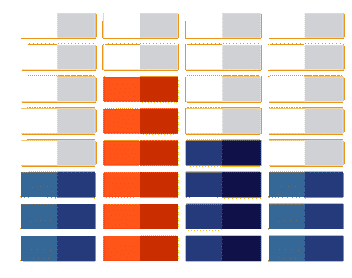 Musik Charts
Musik Charts